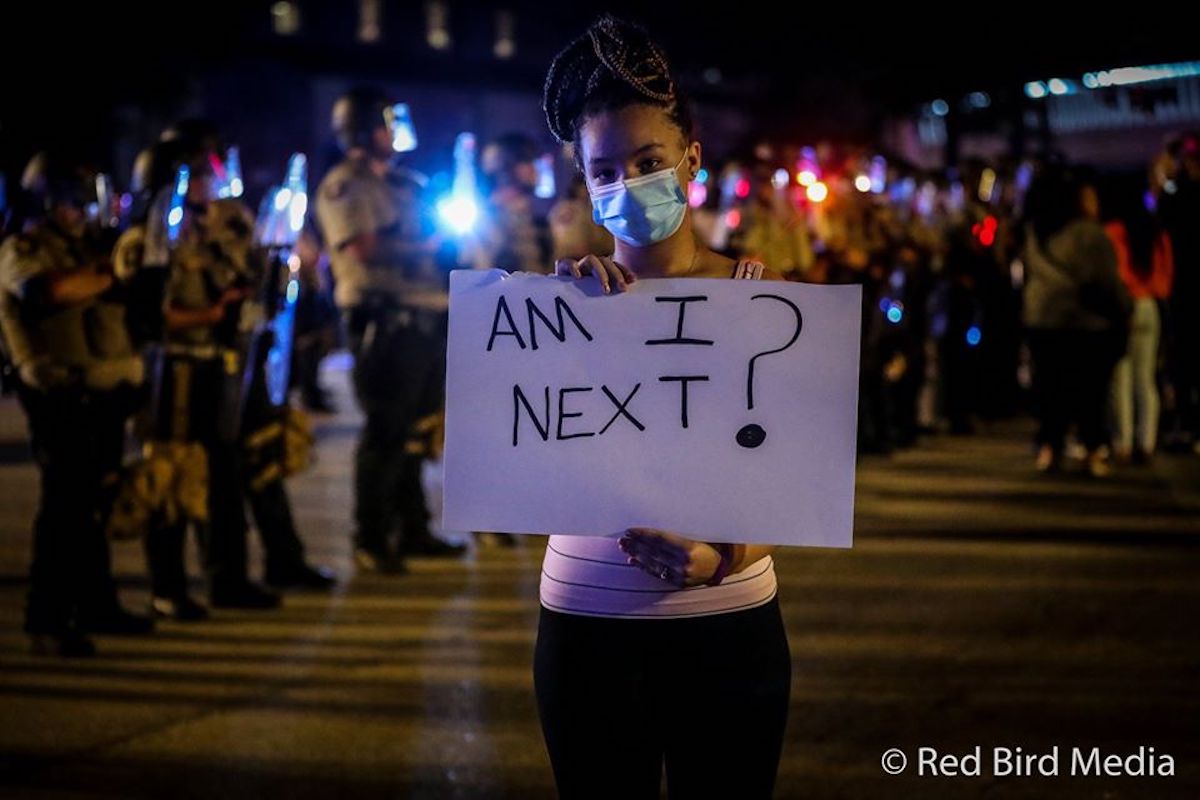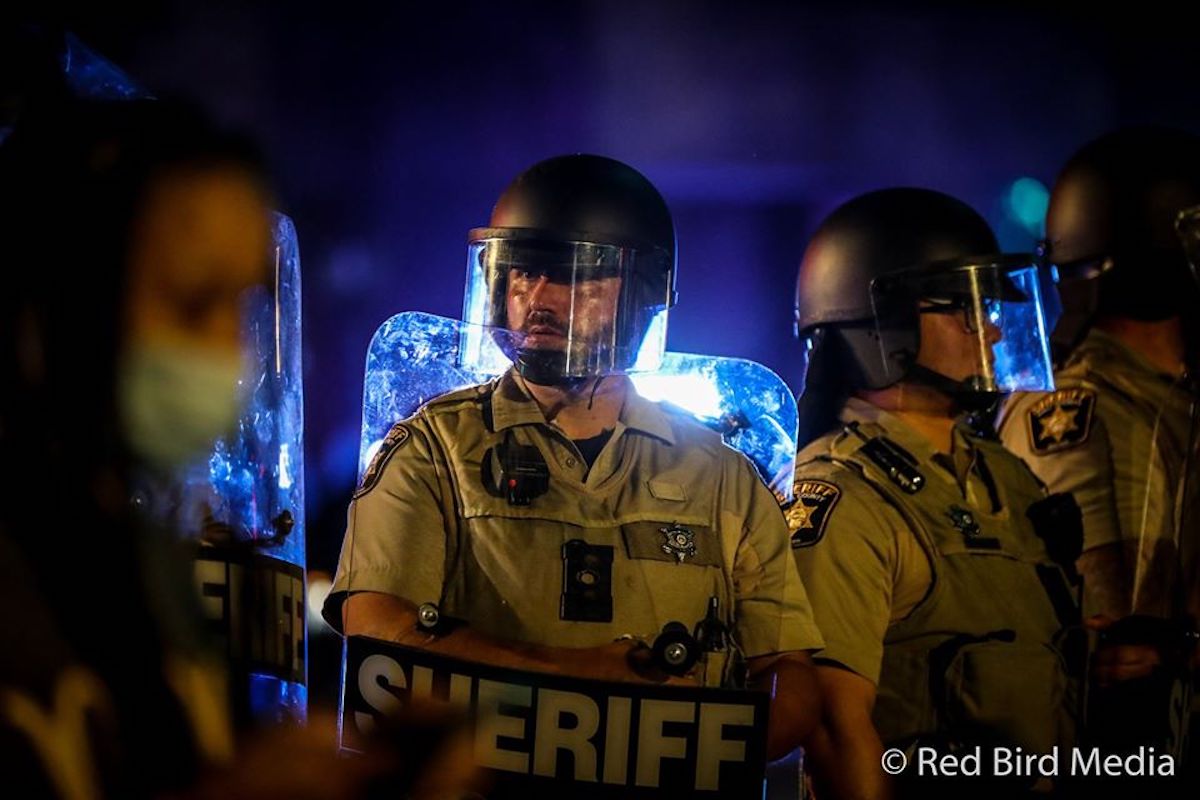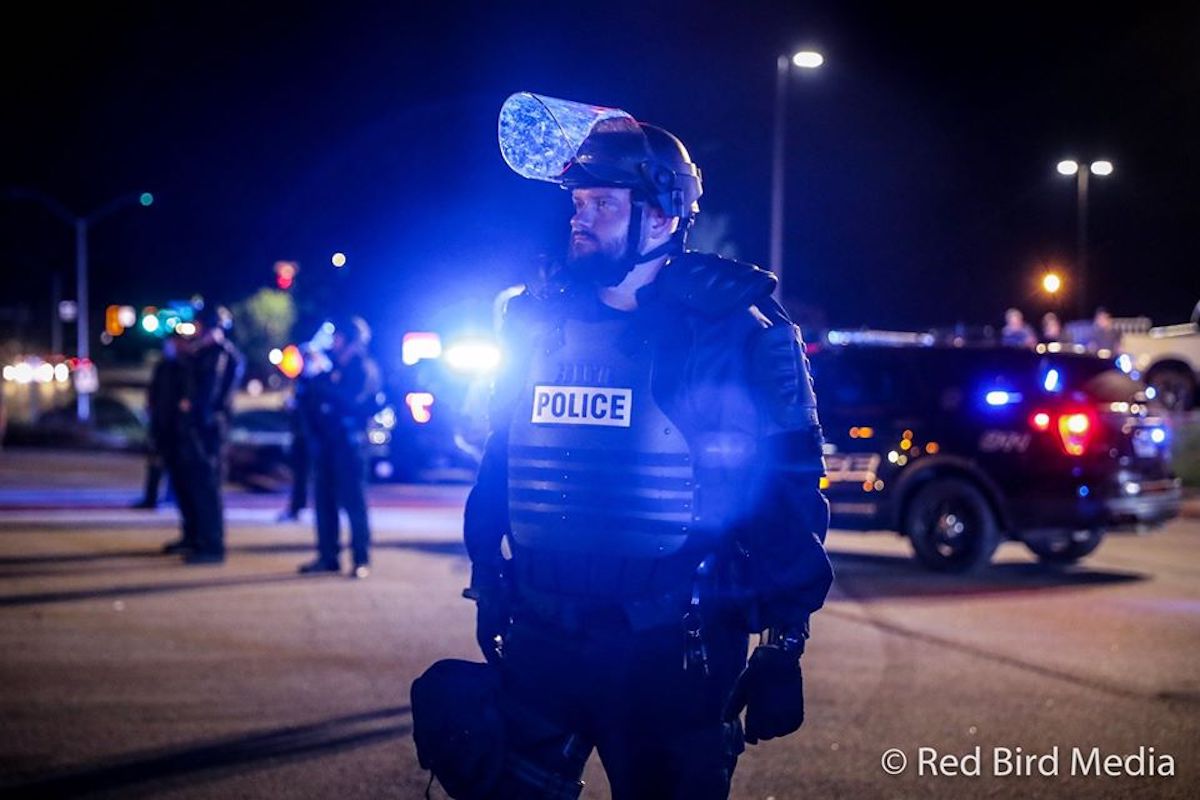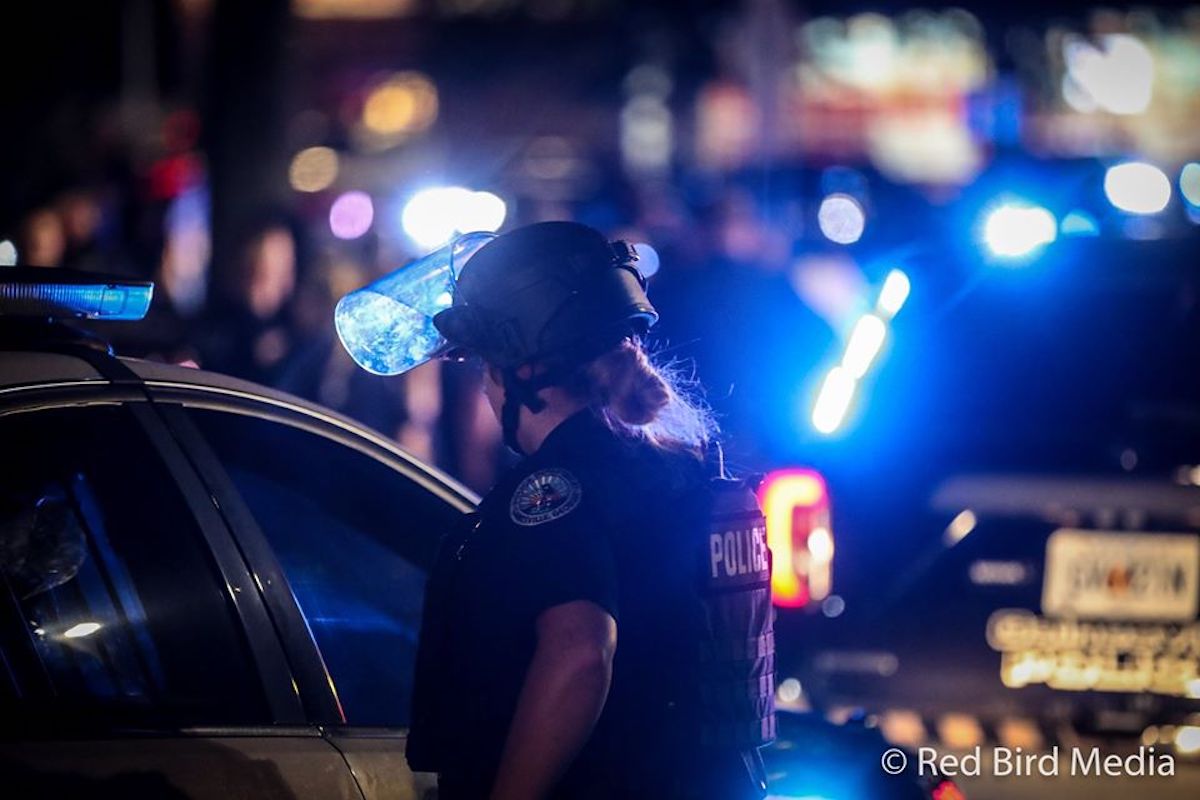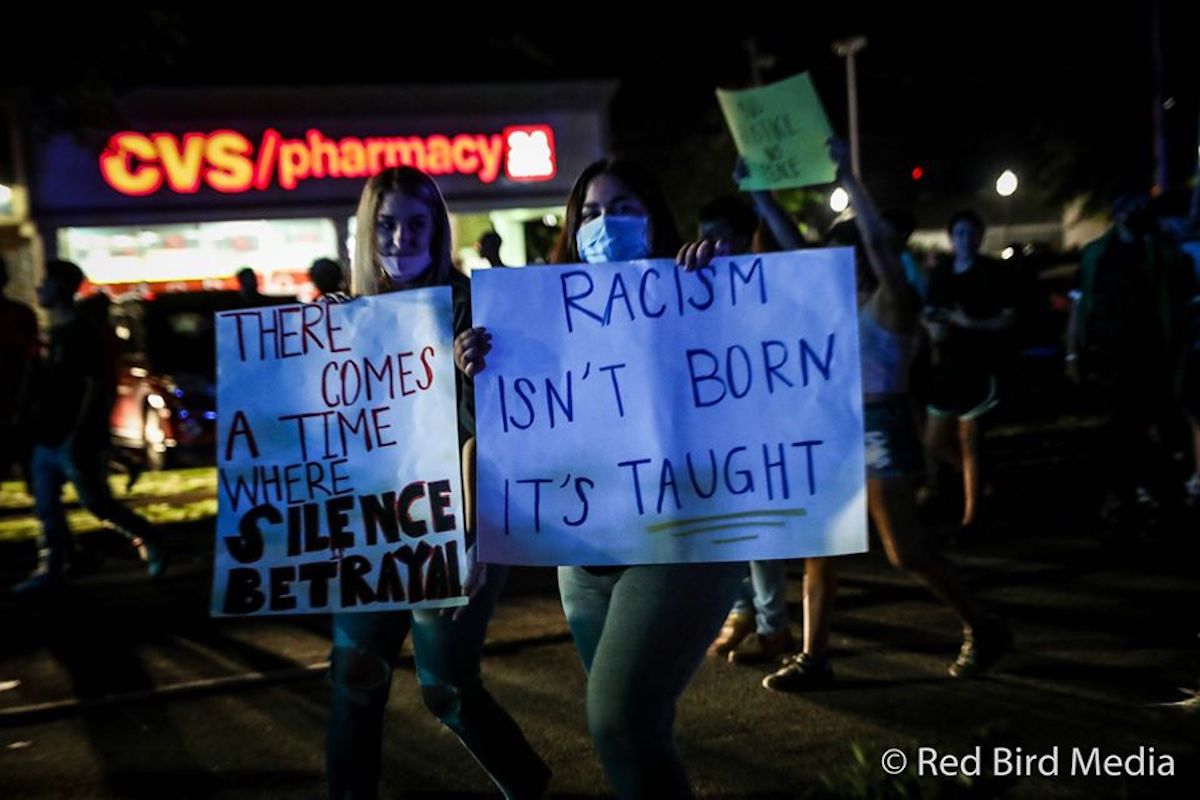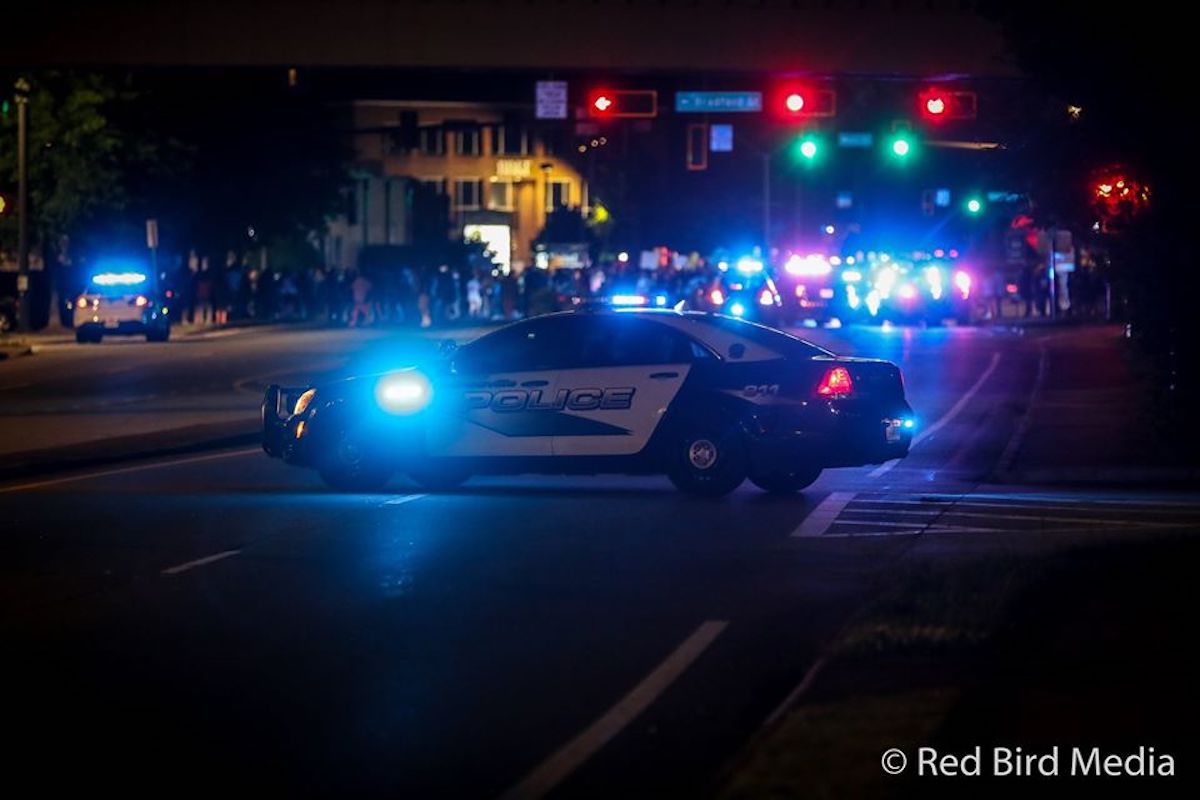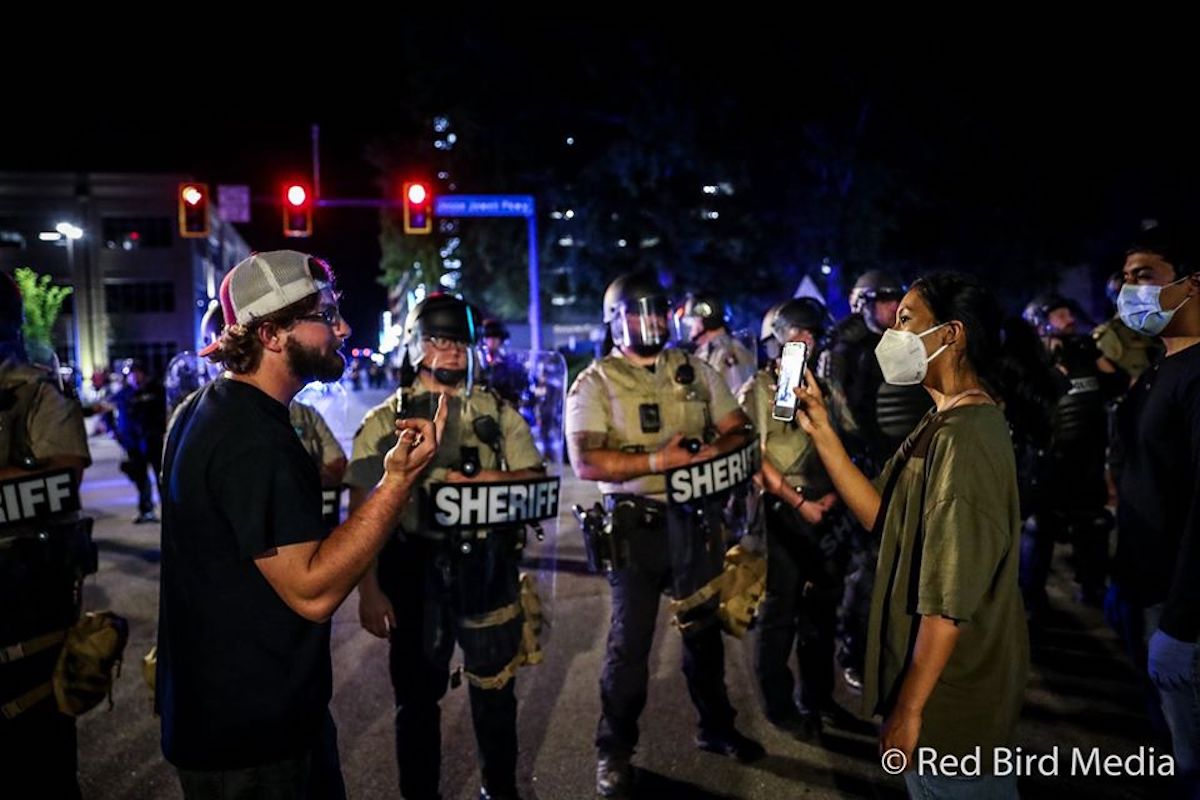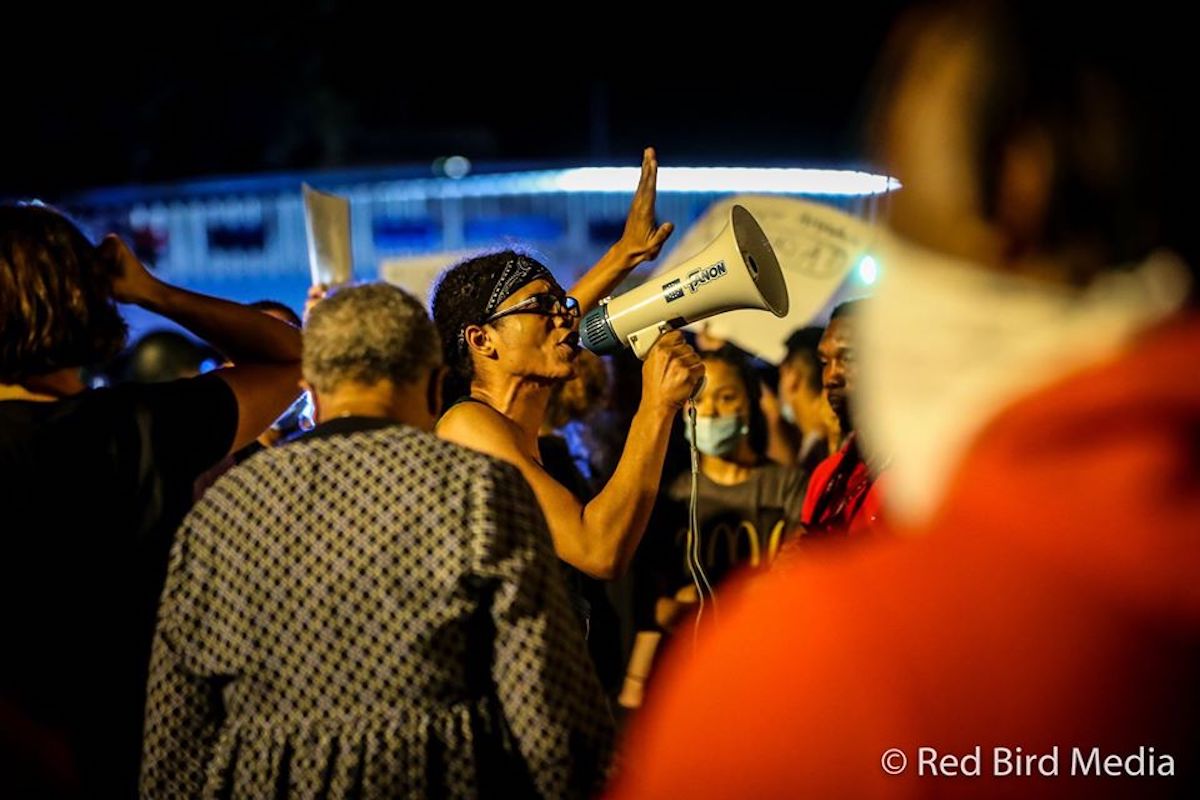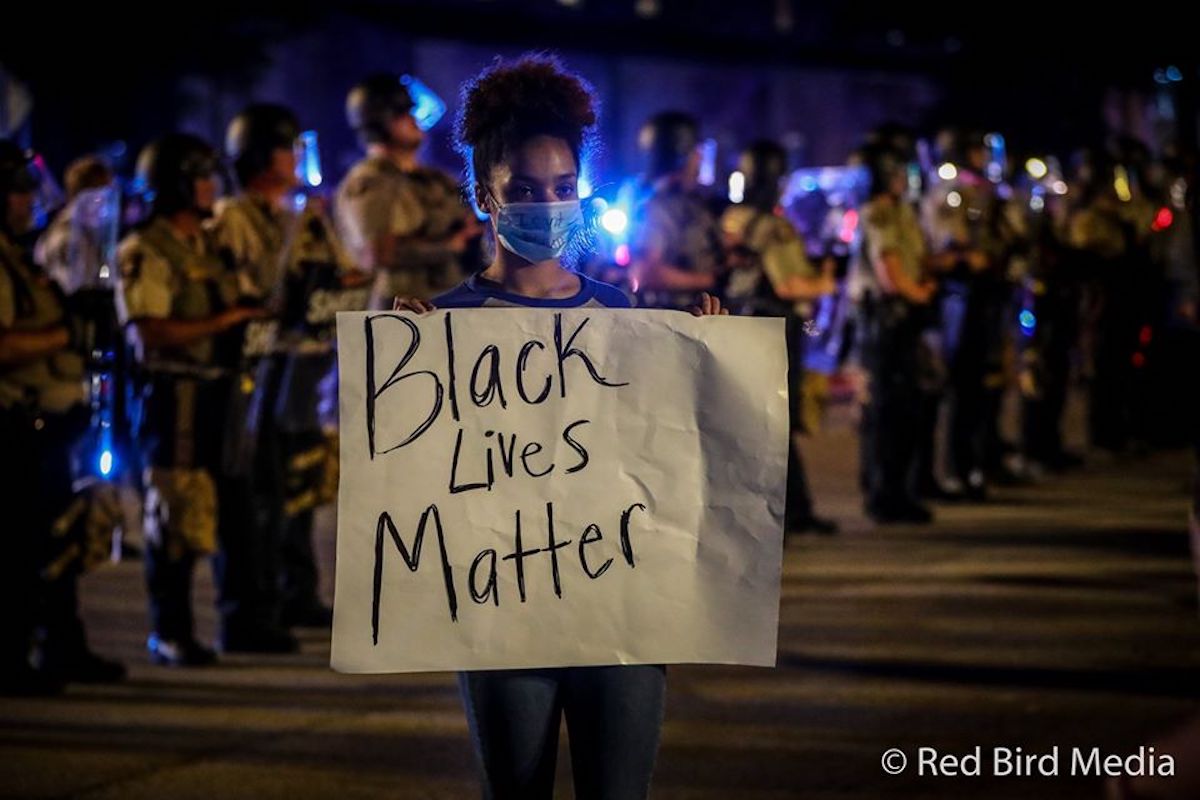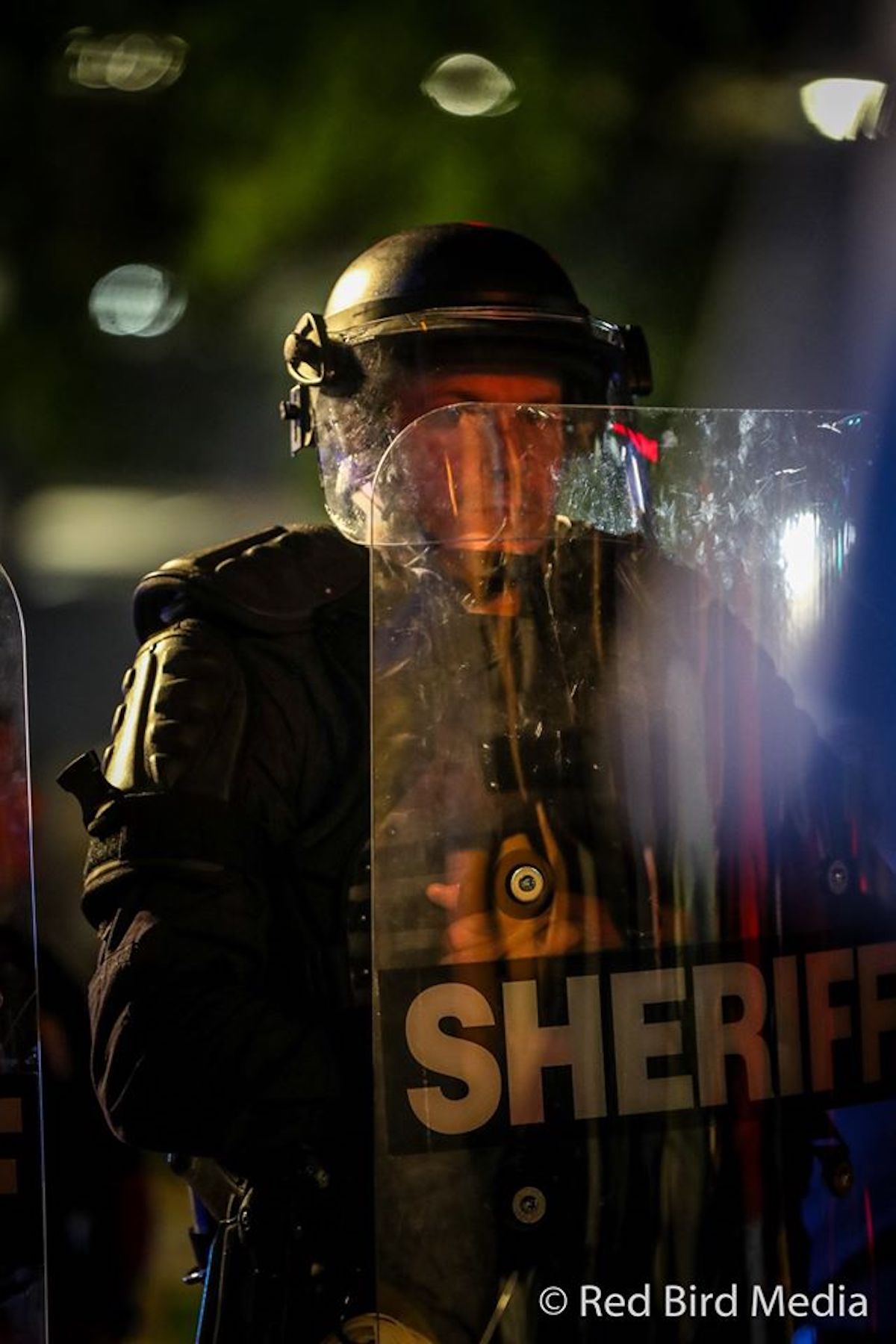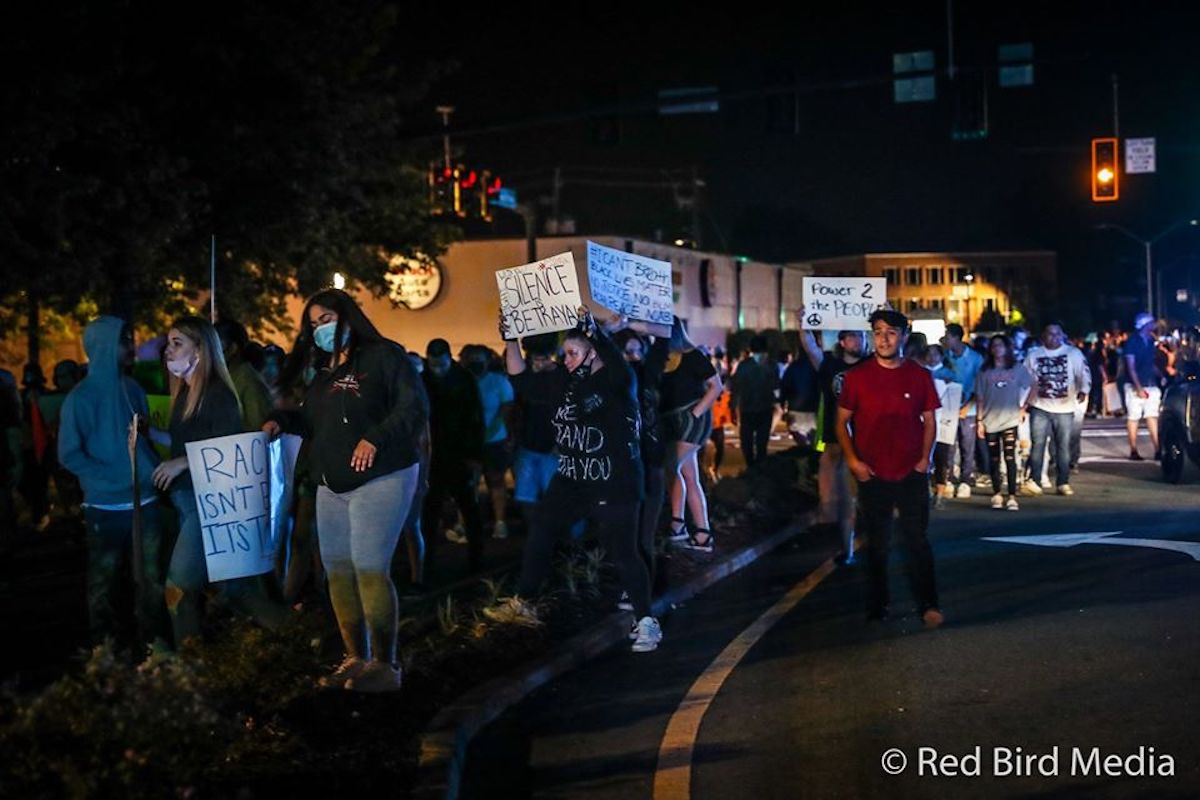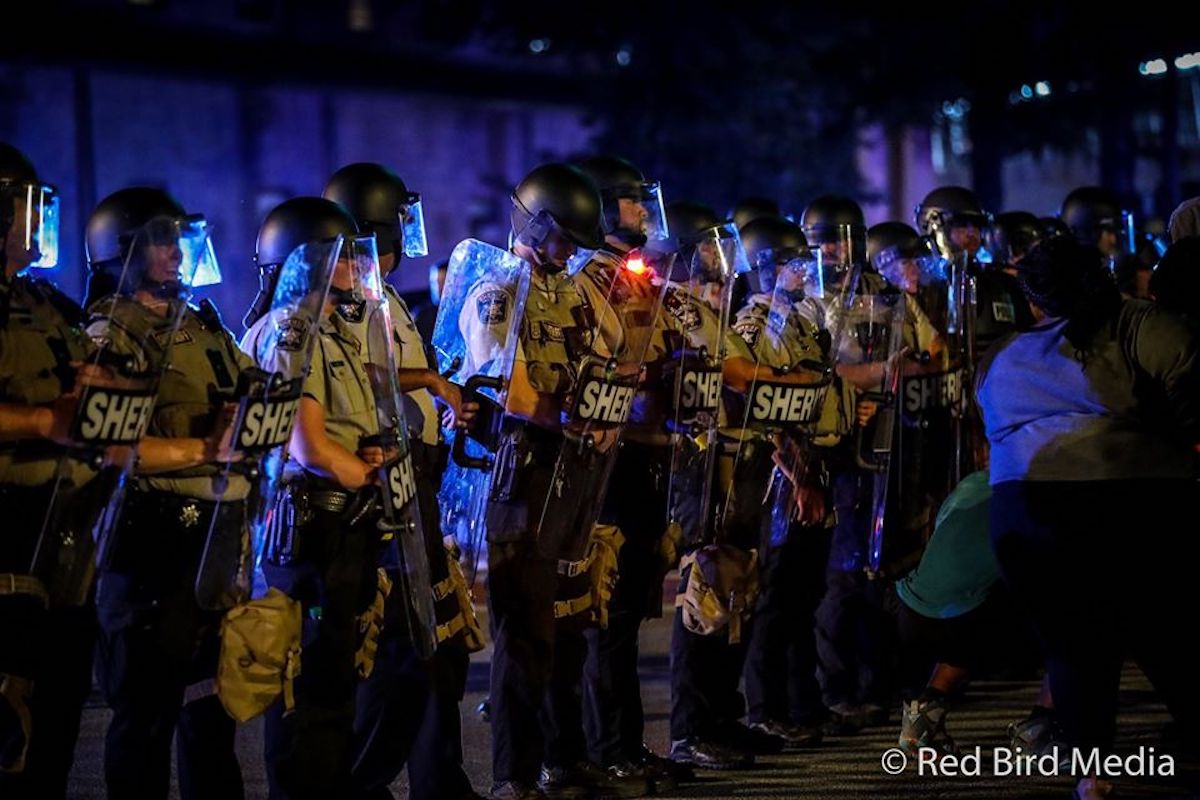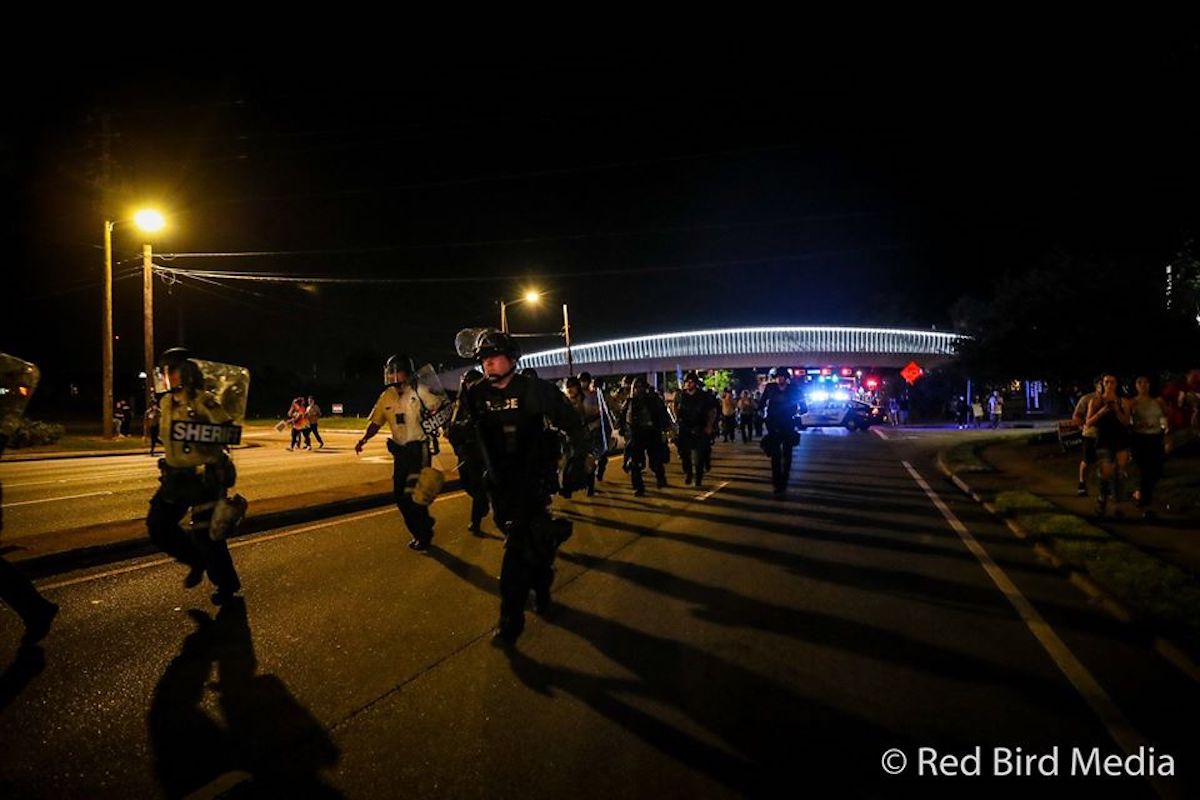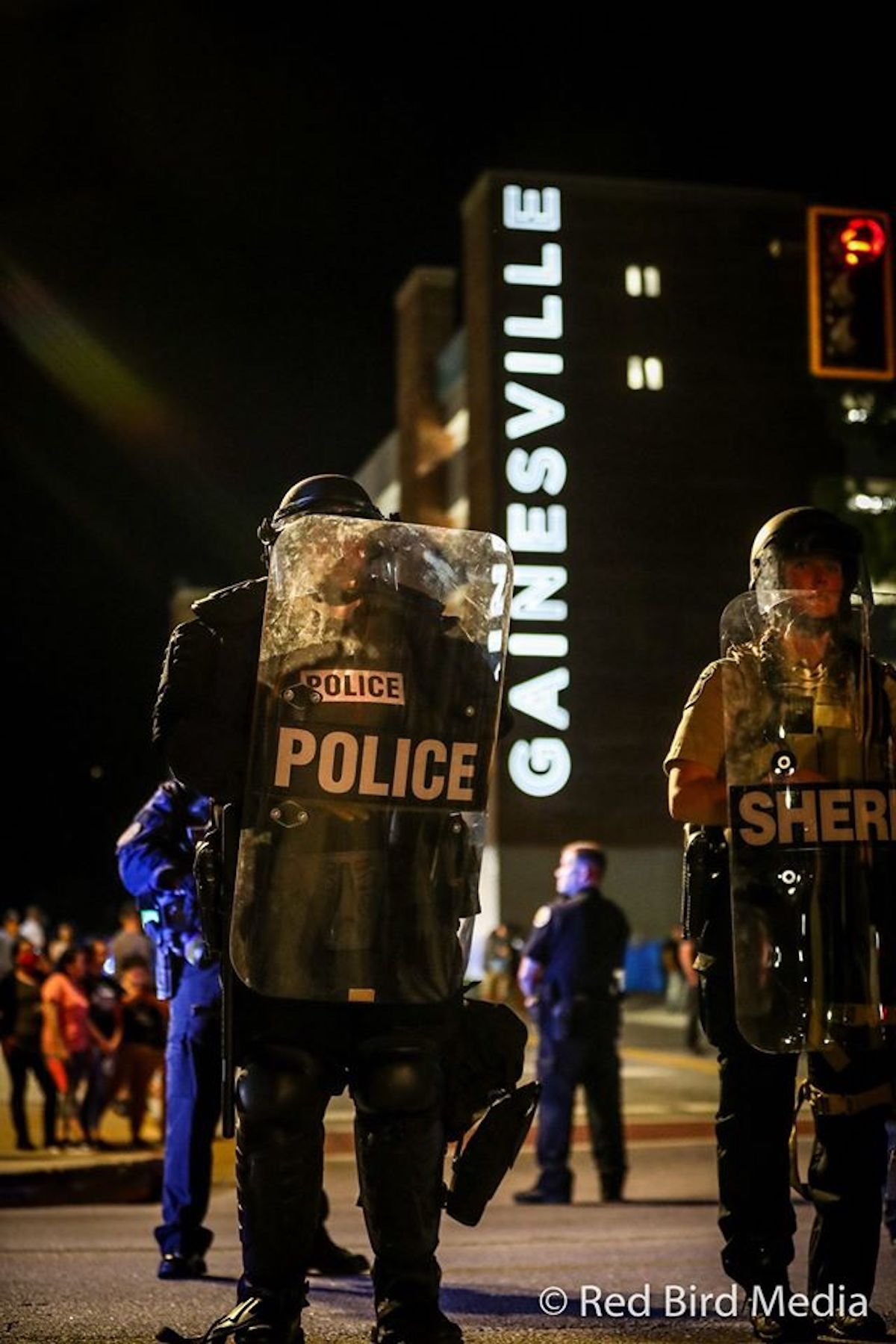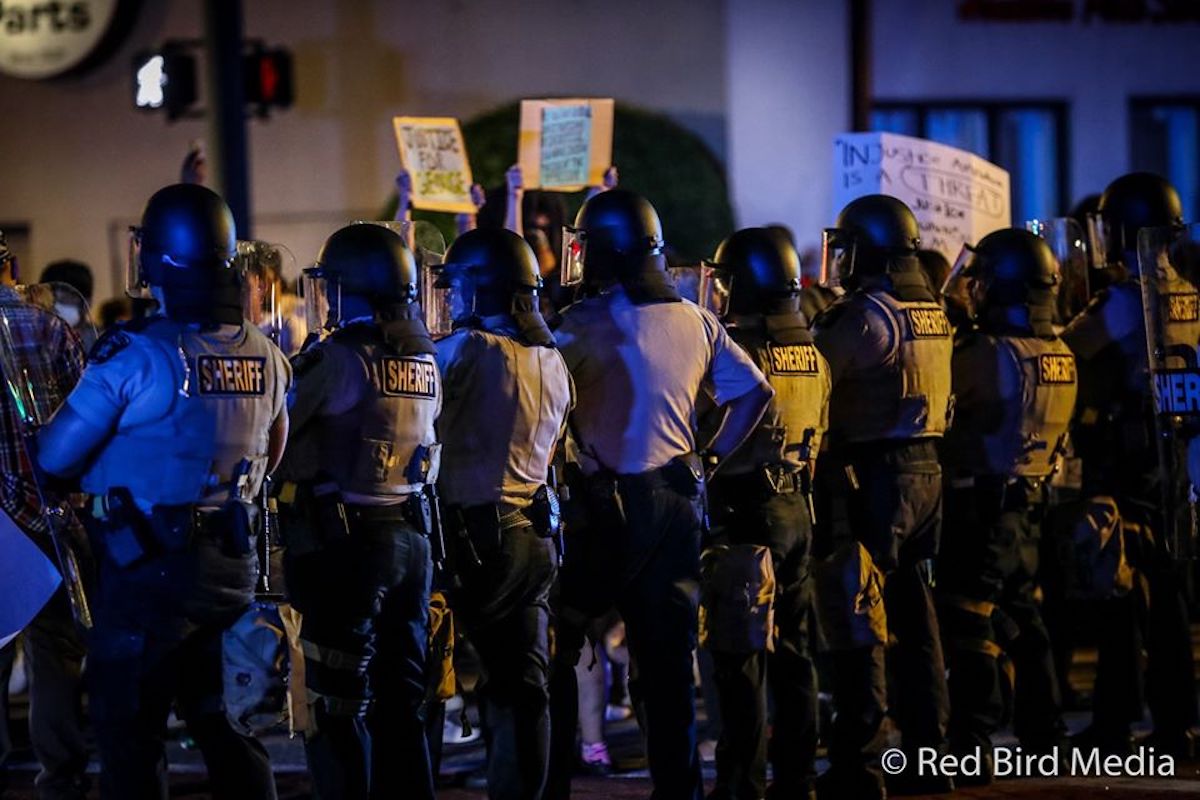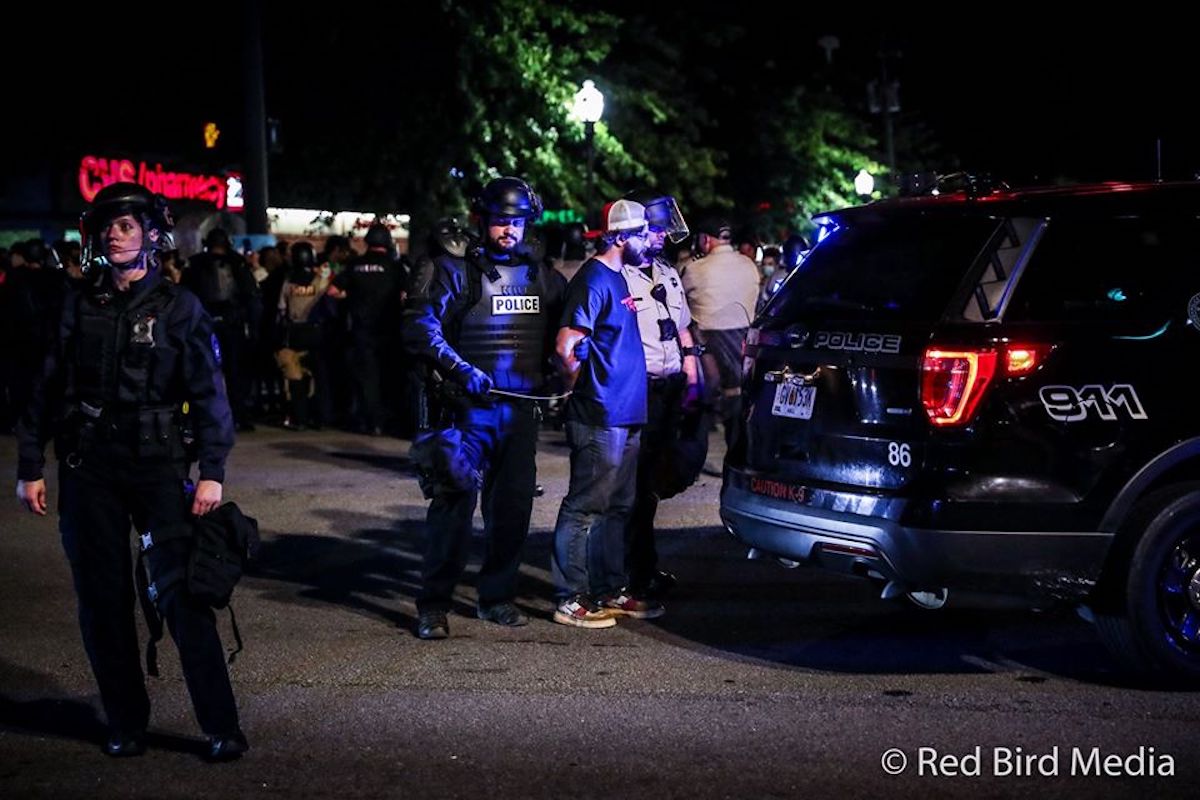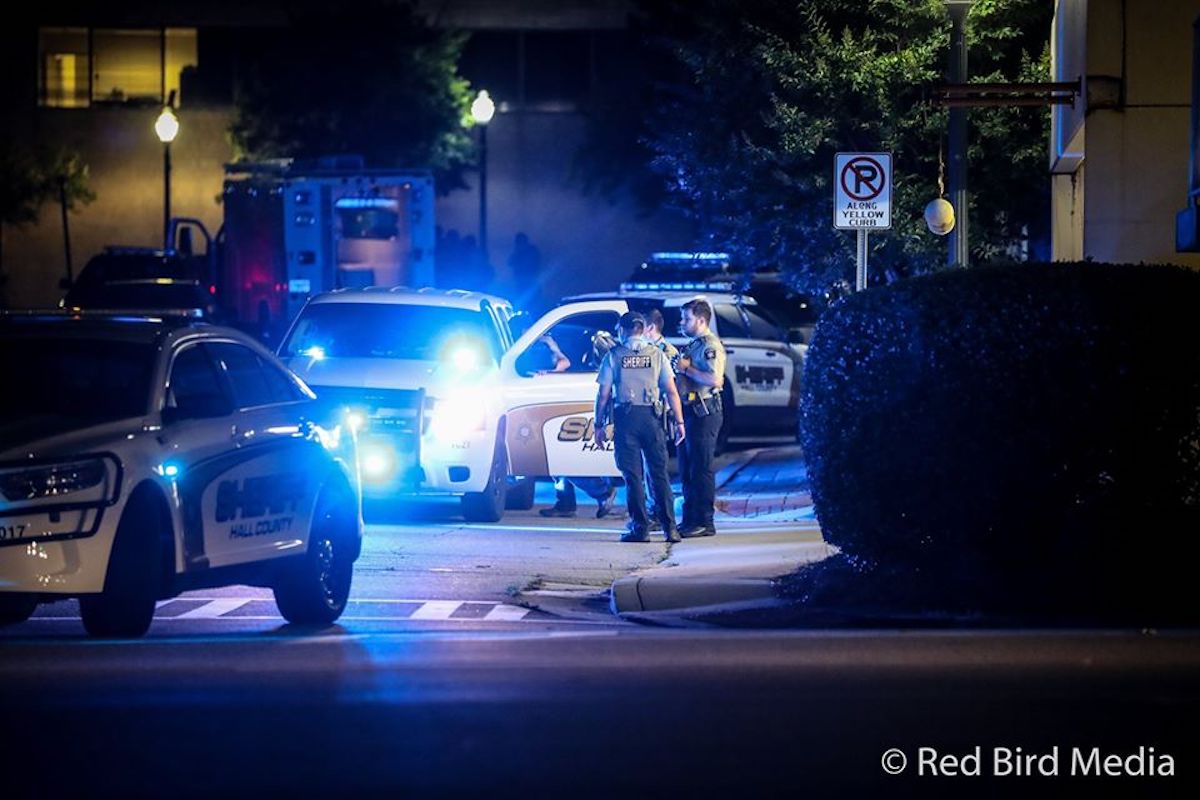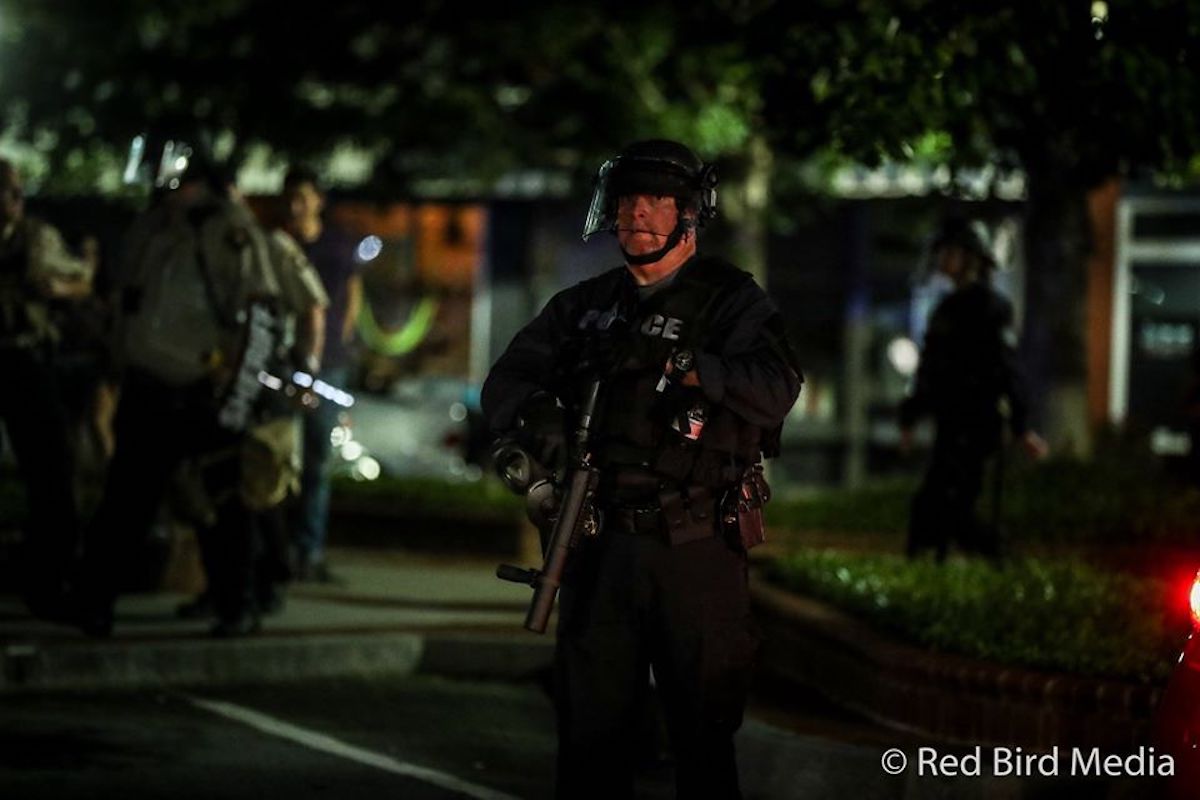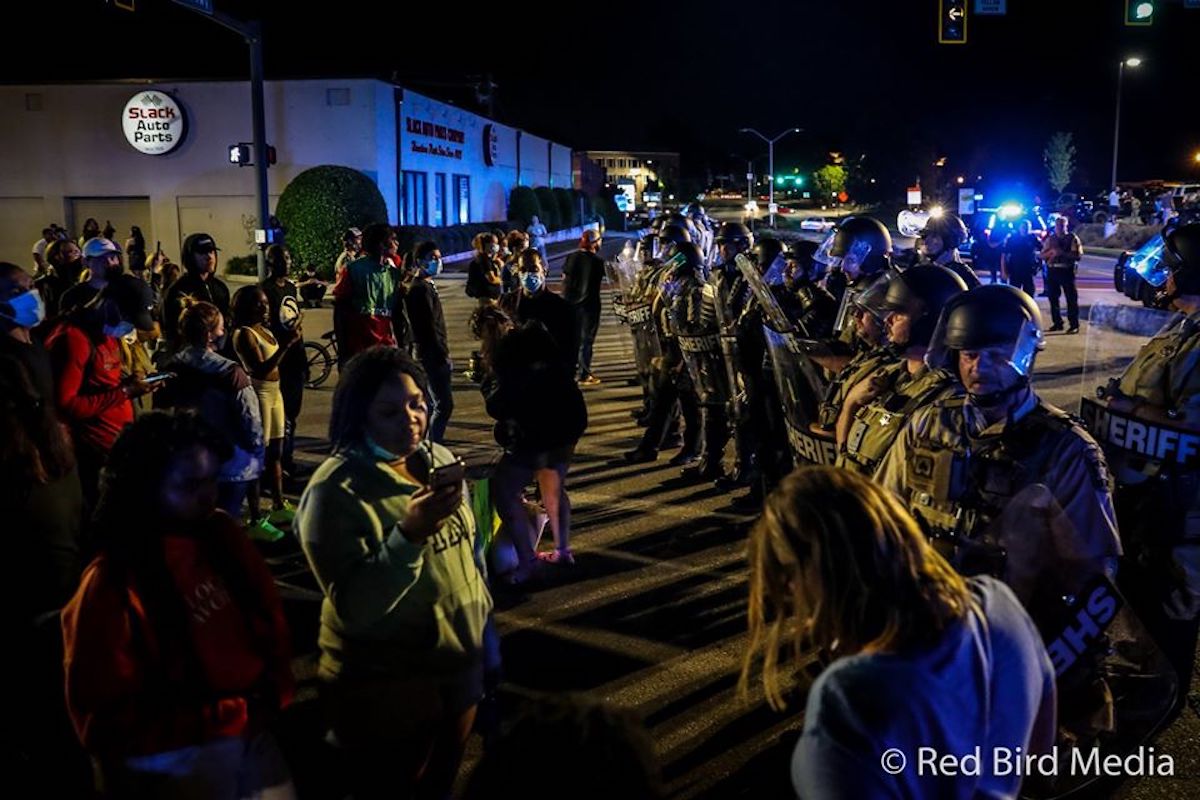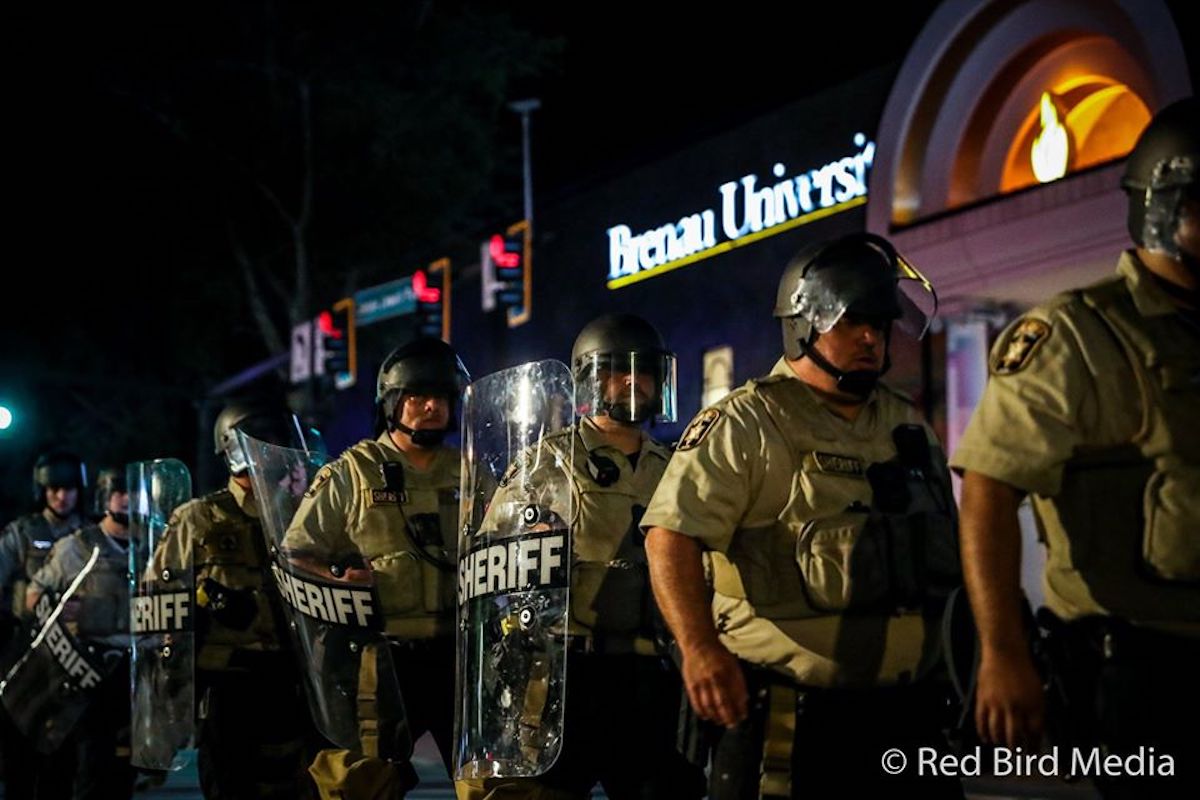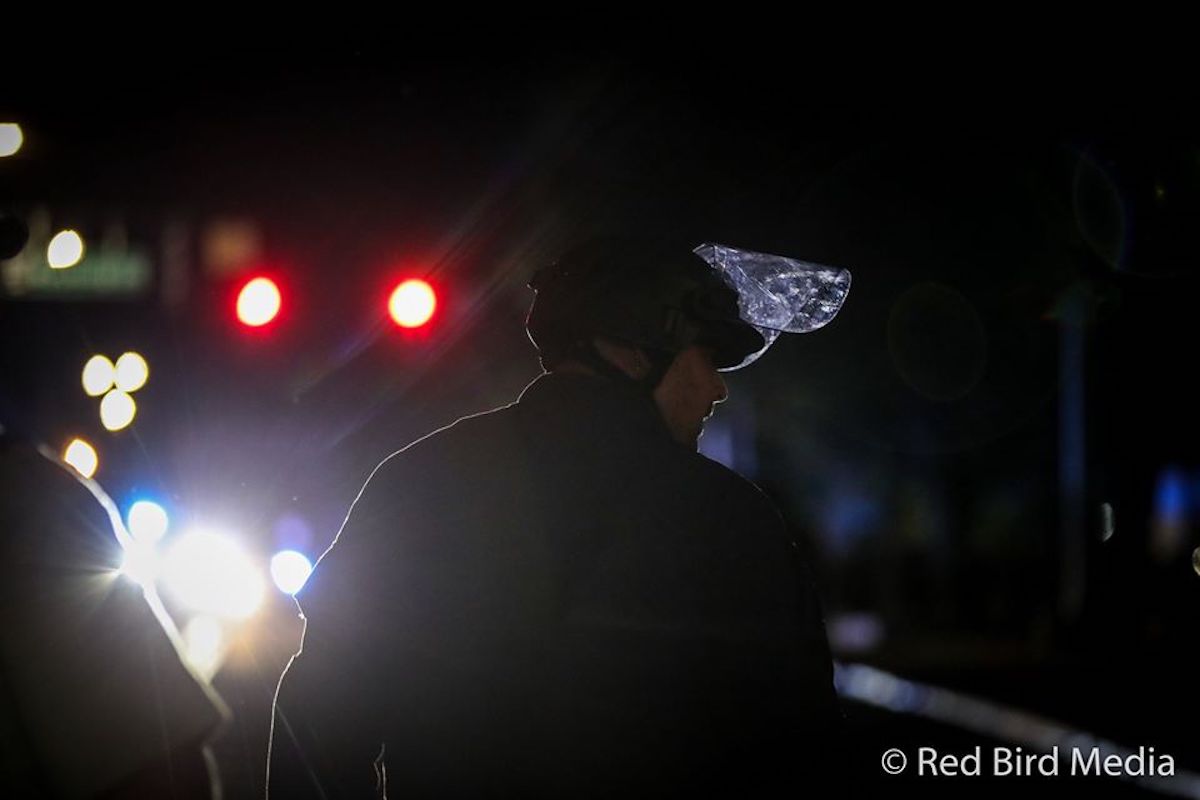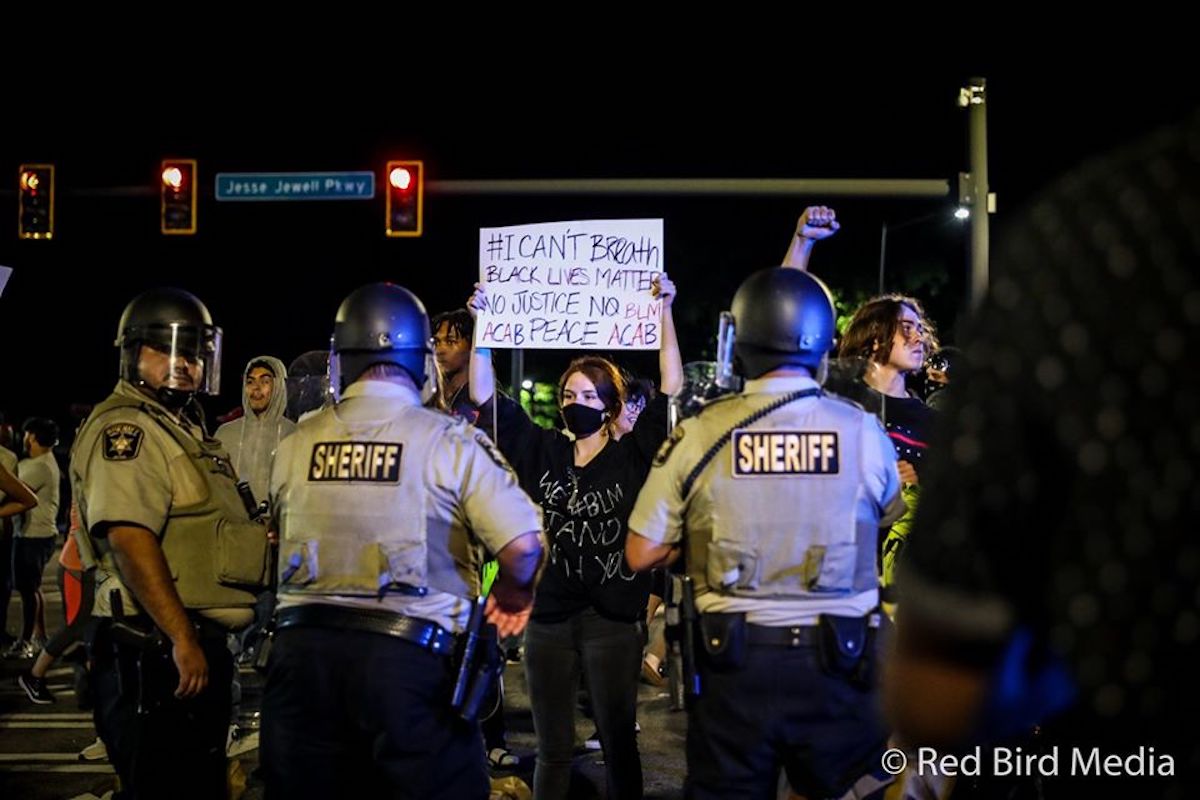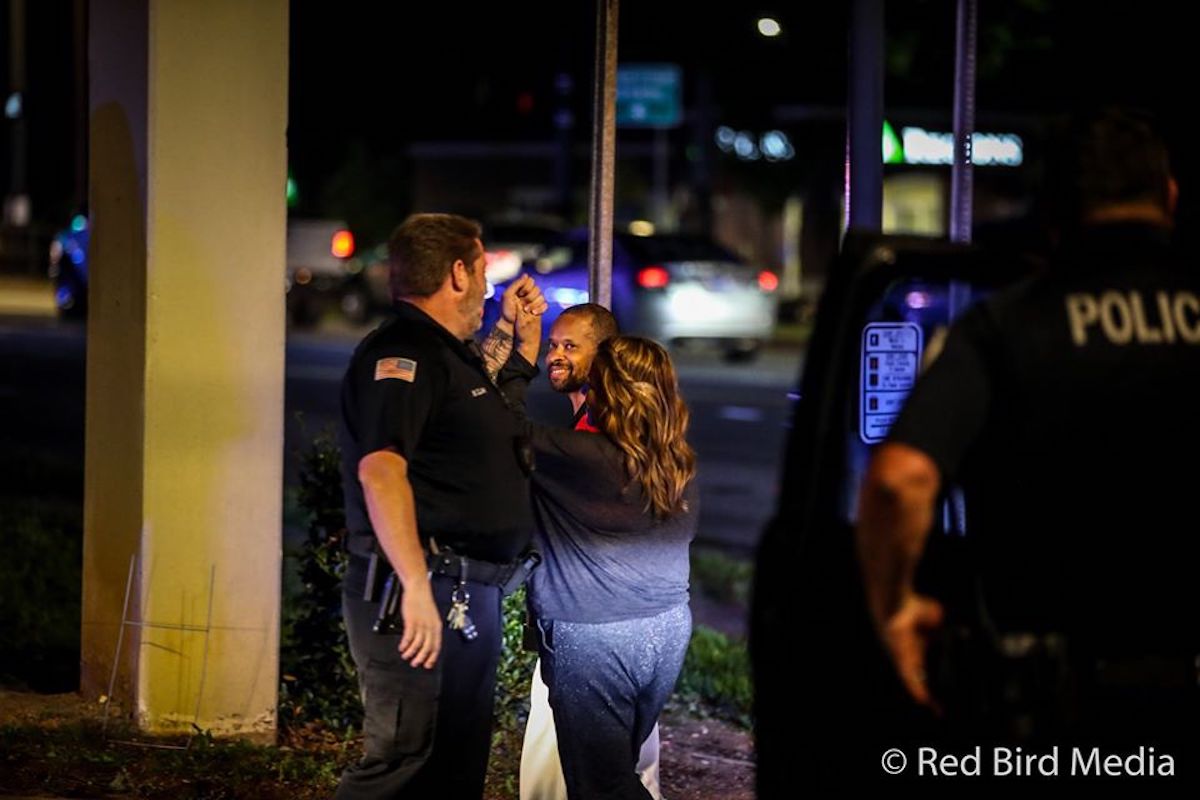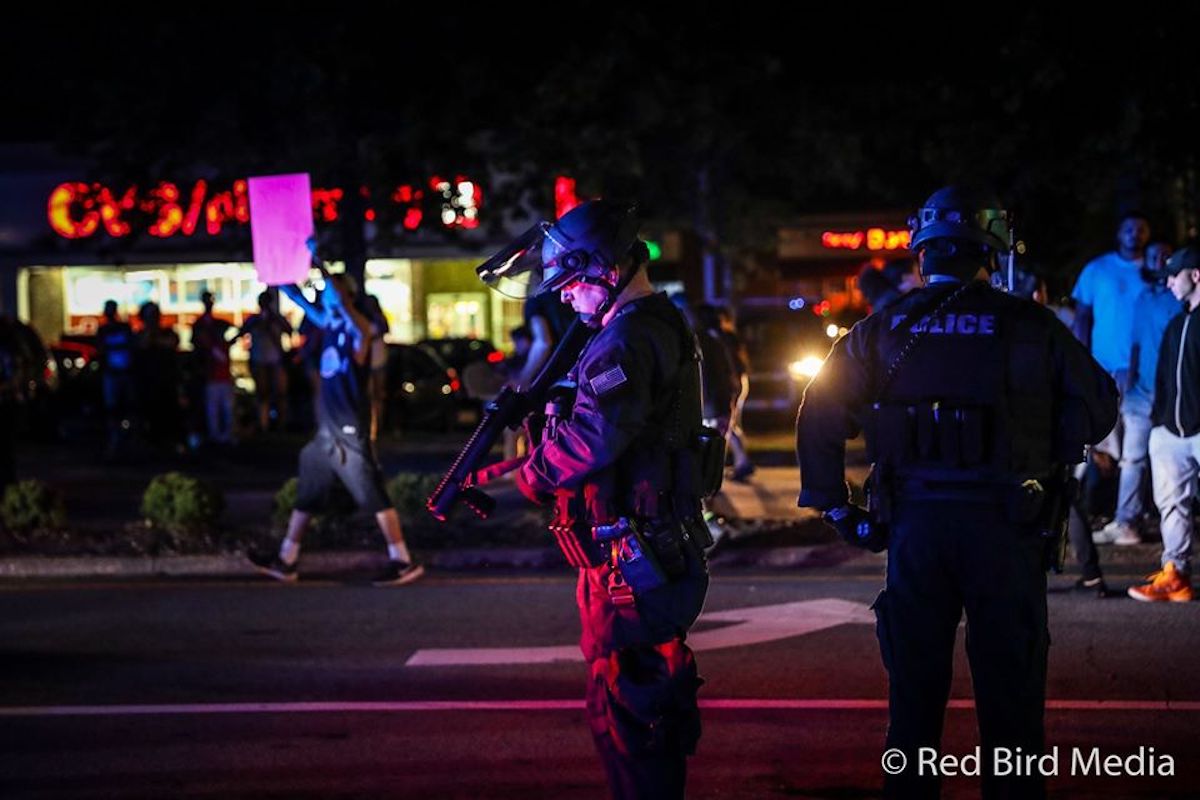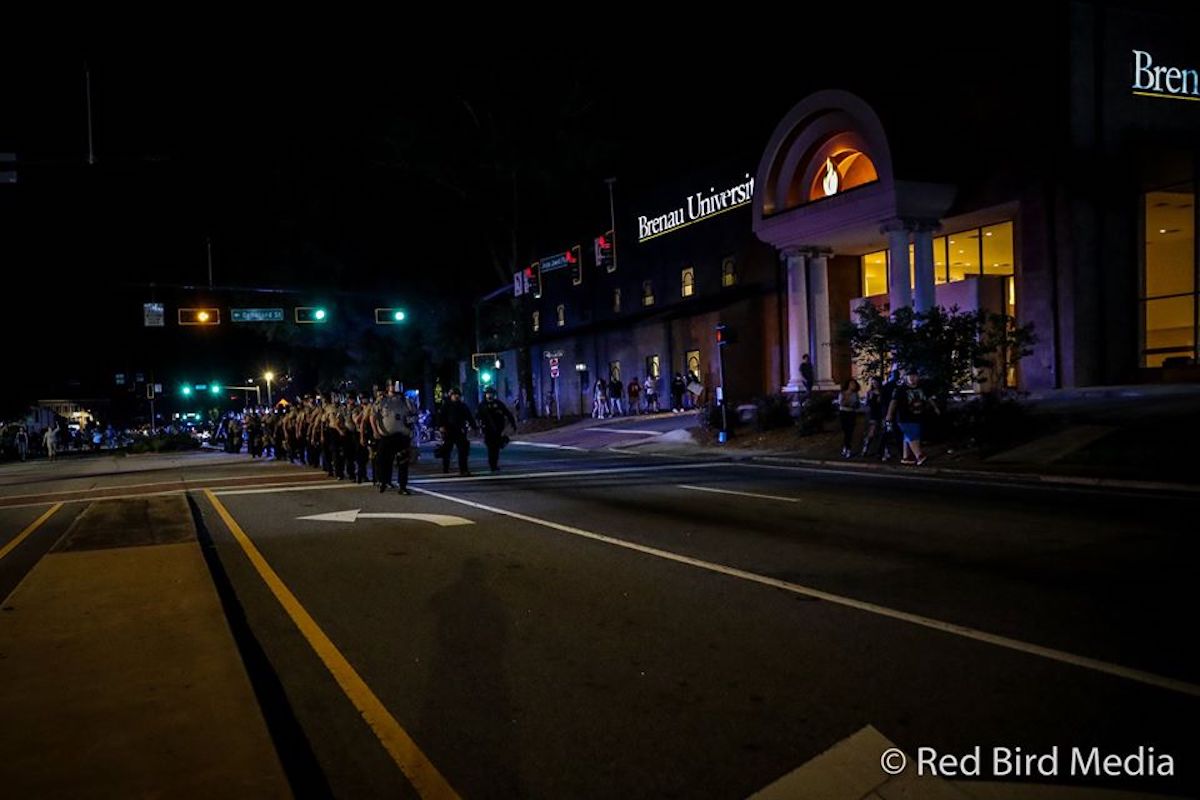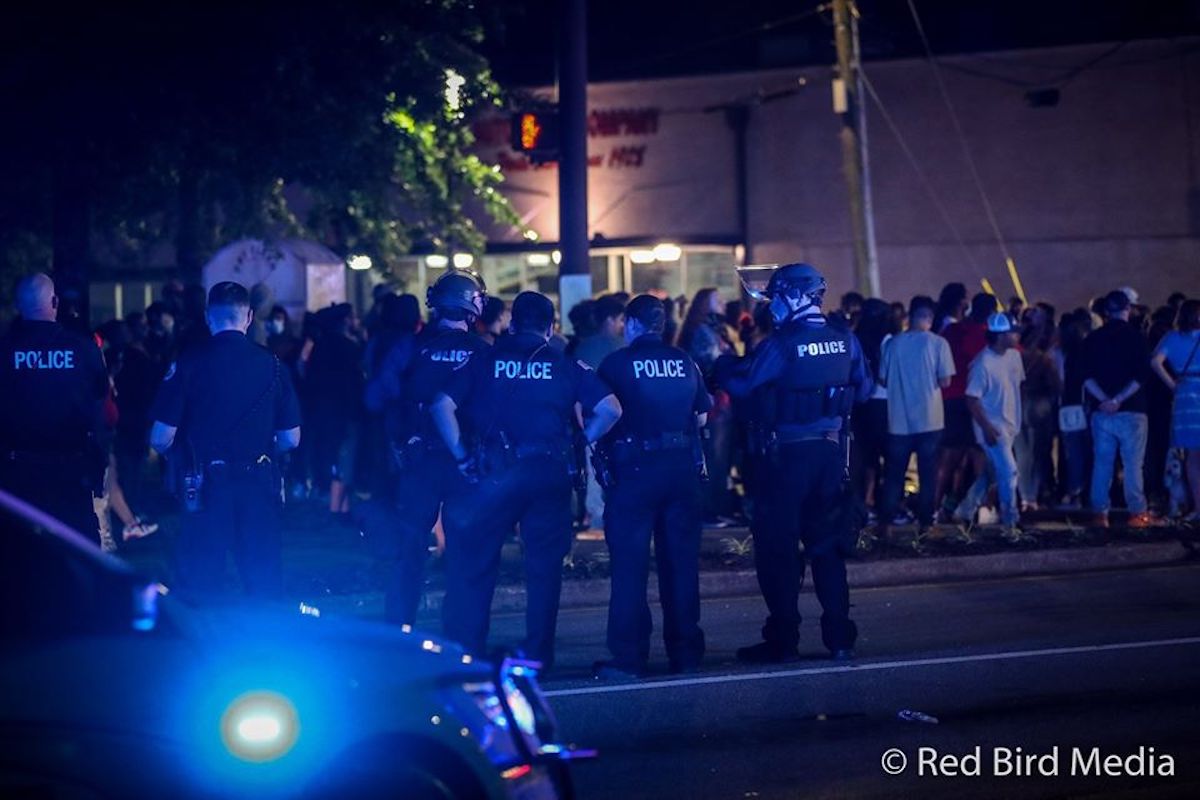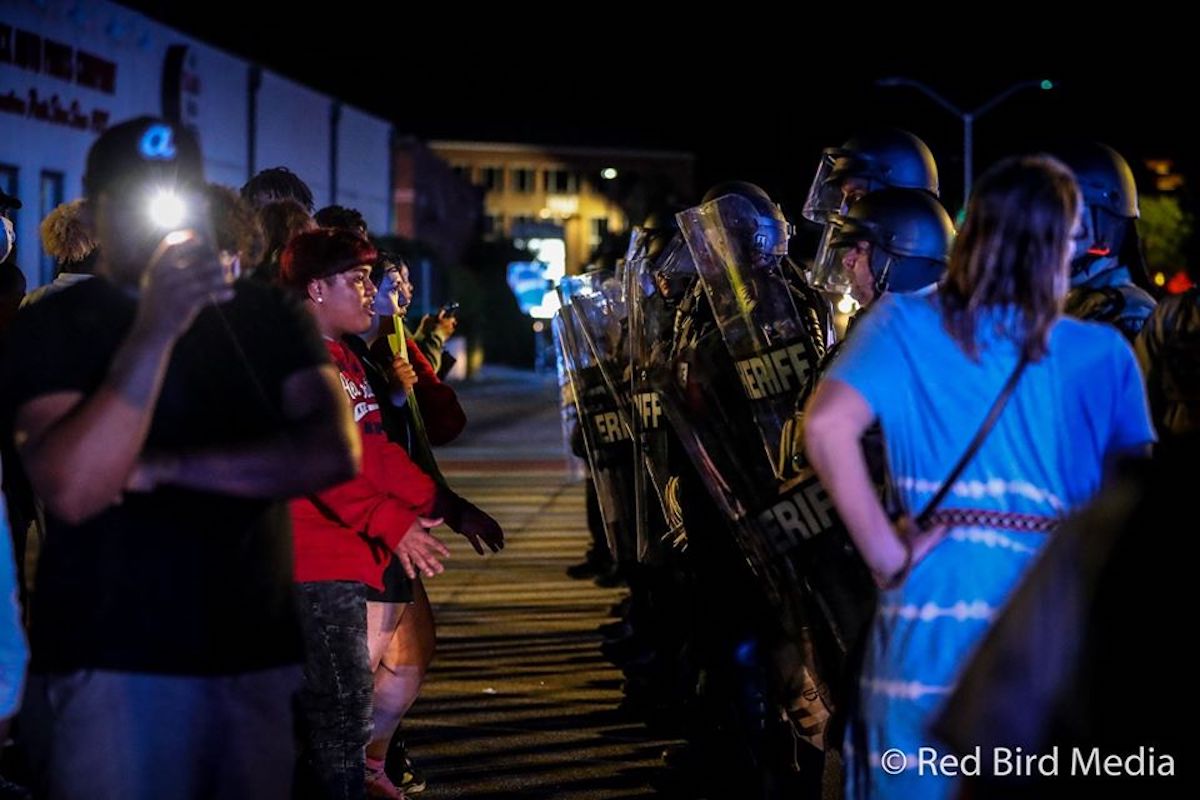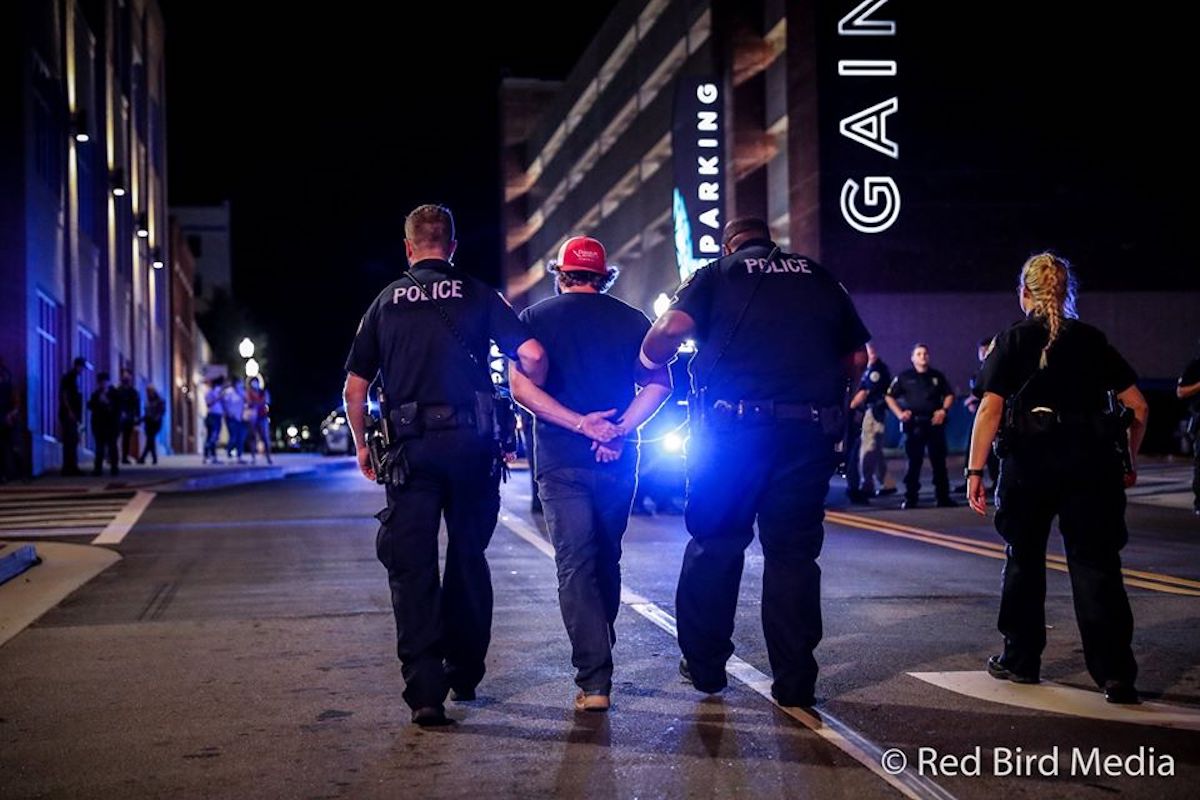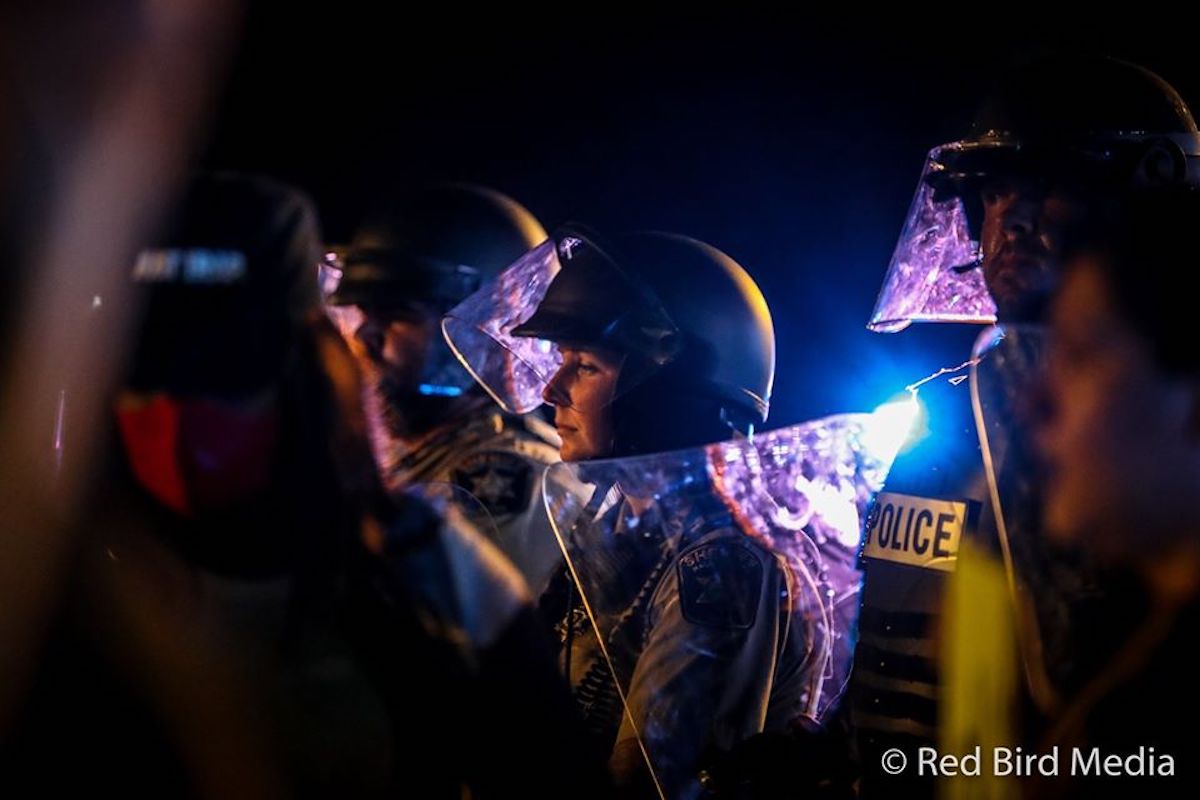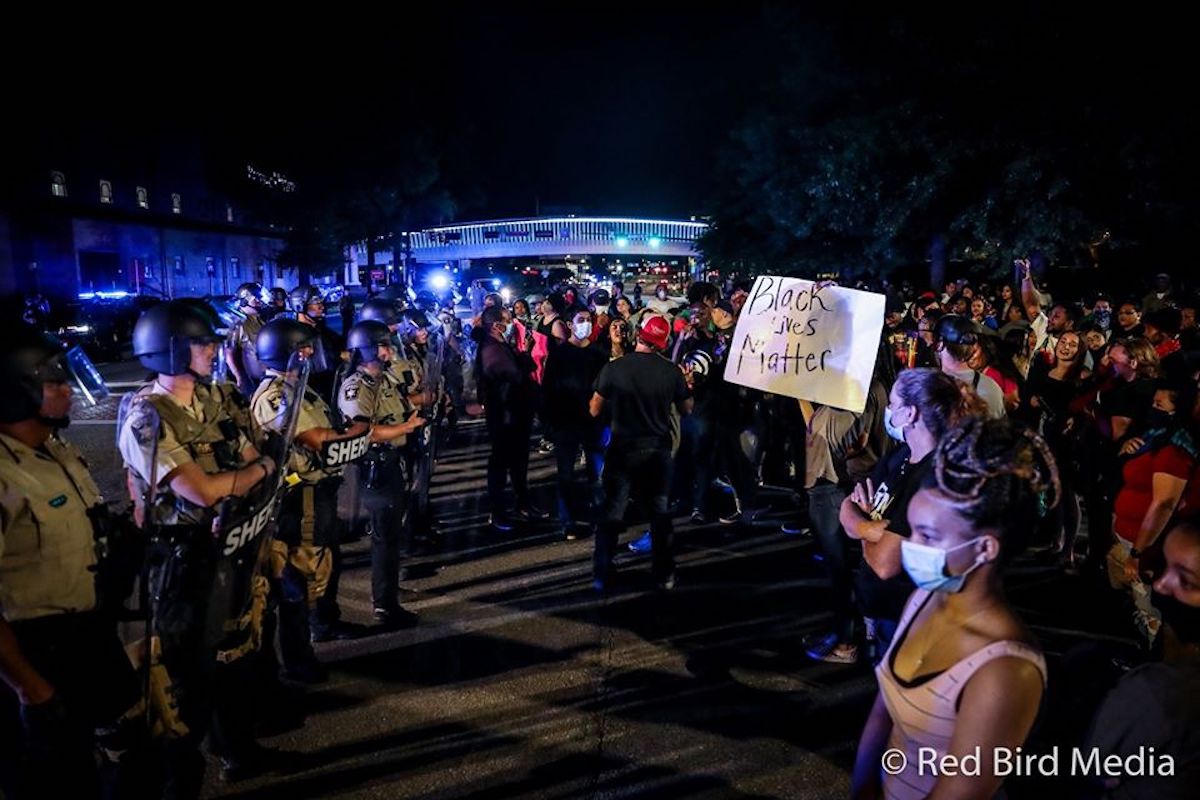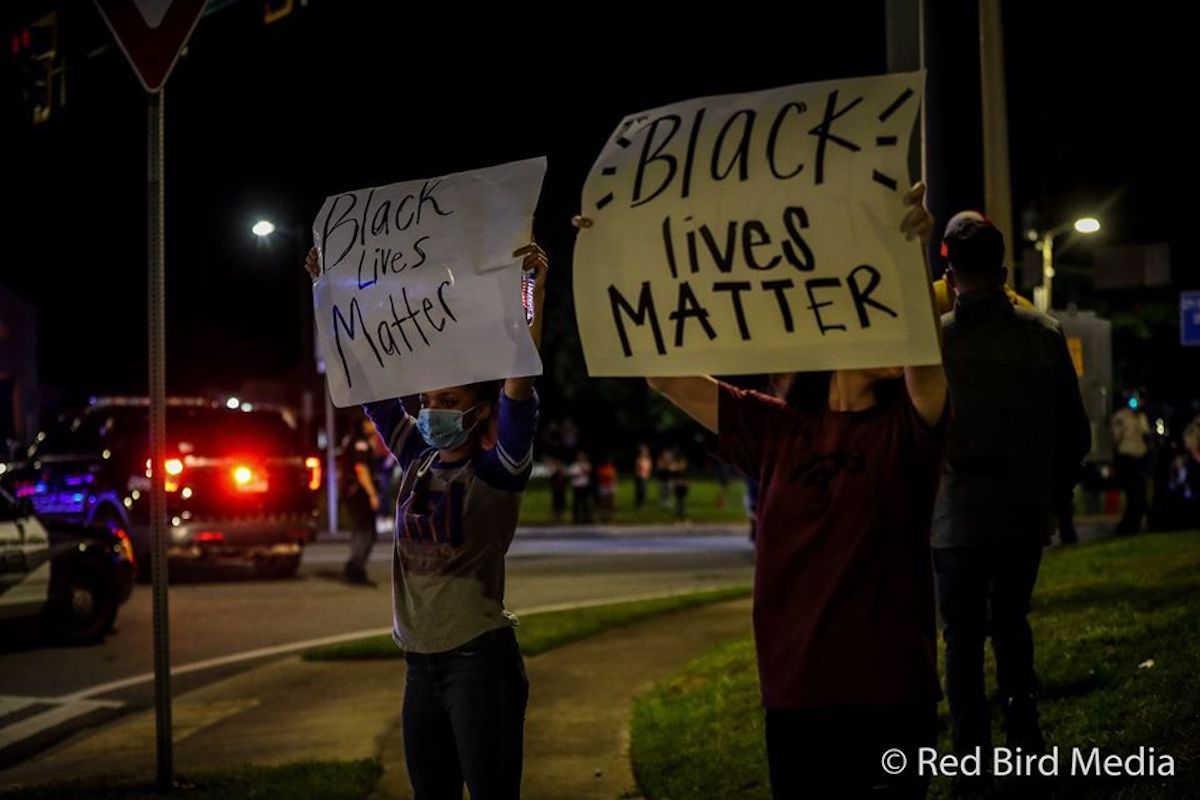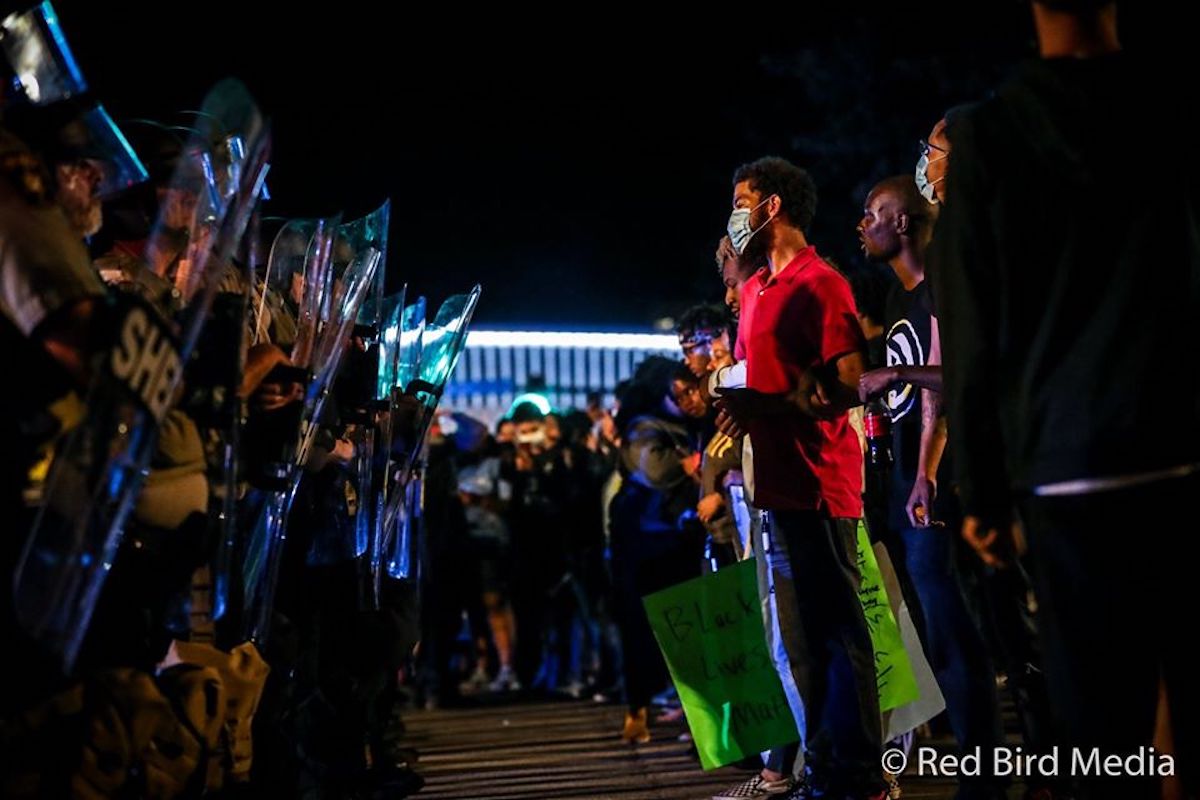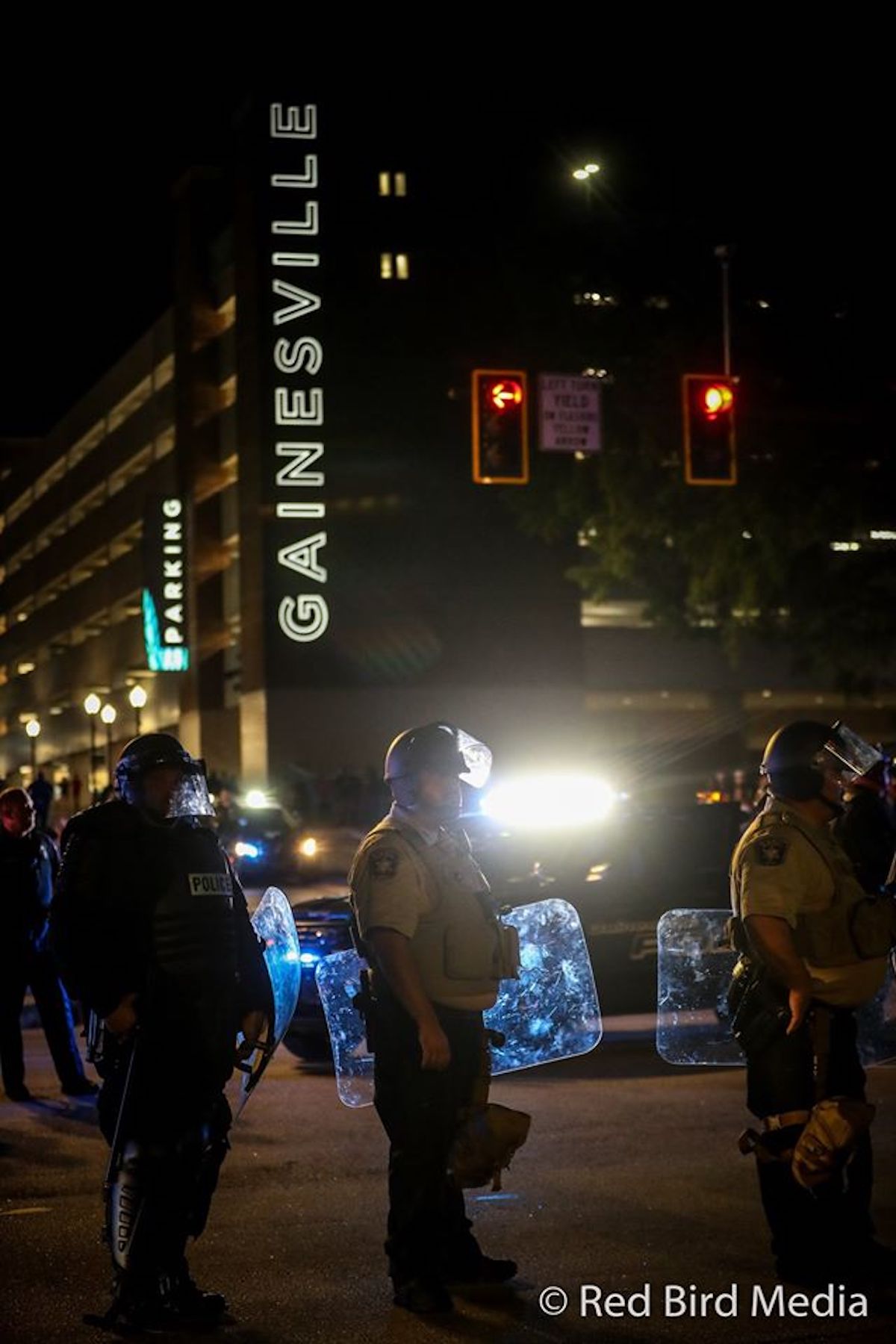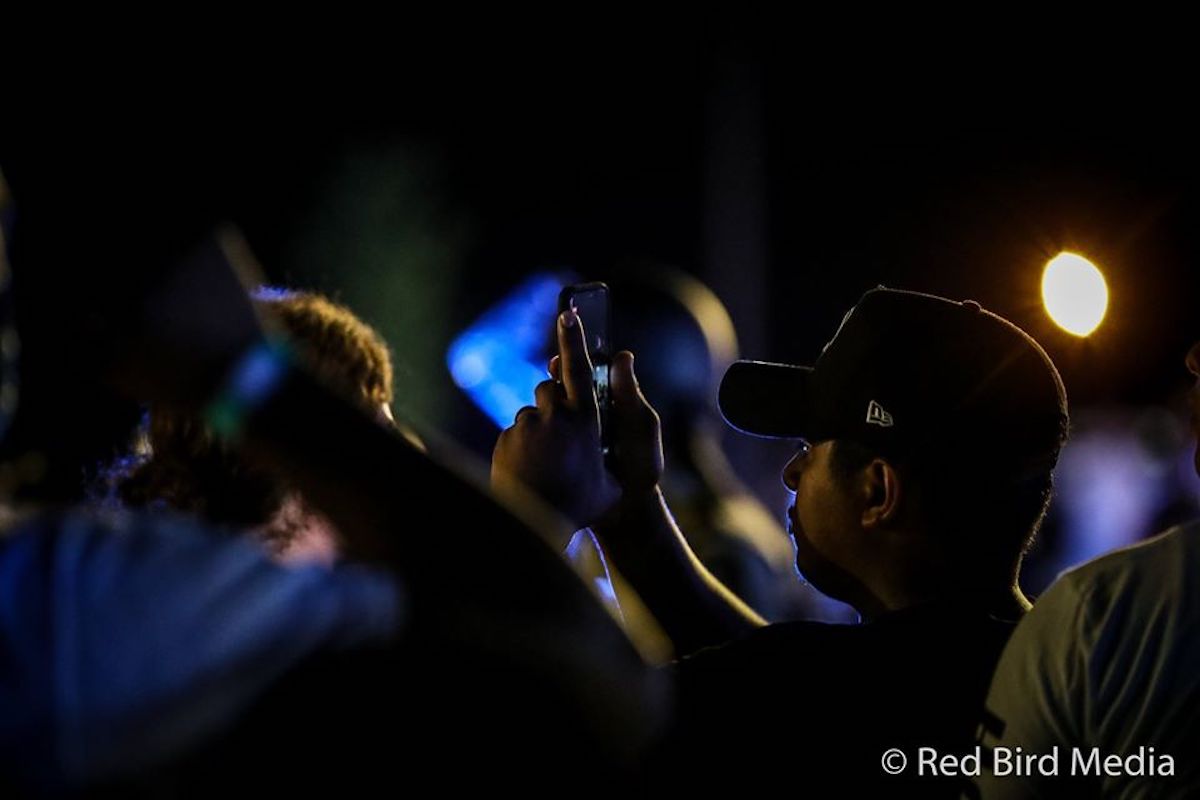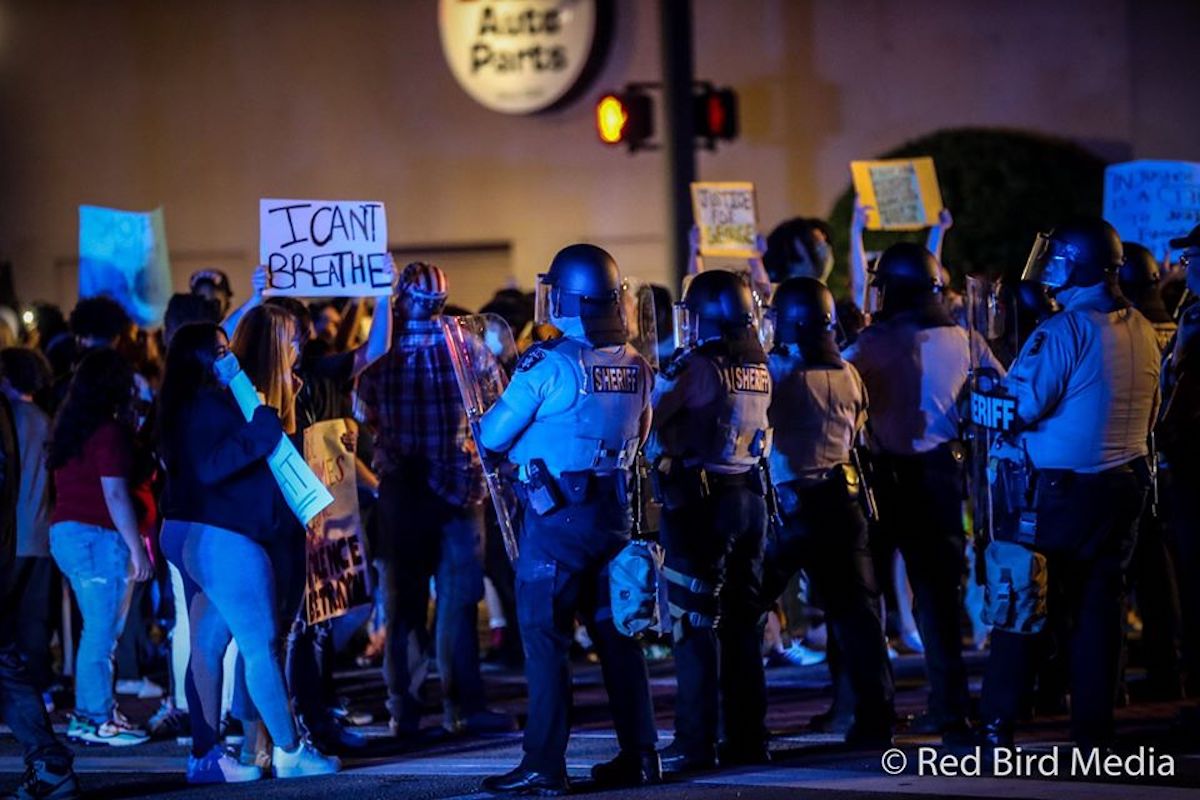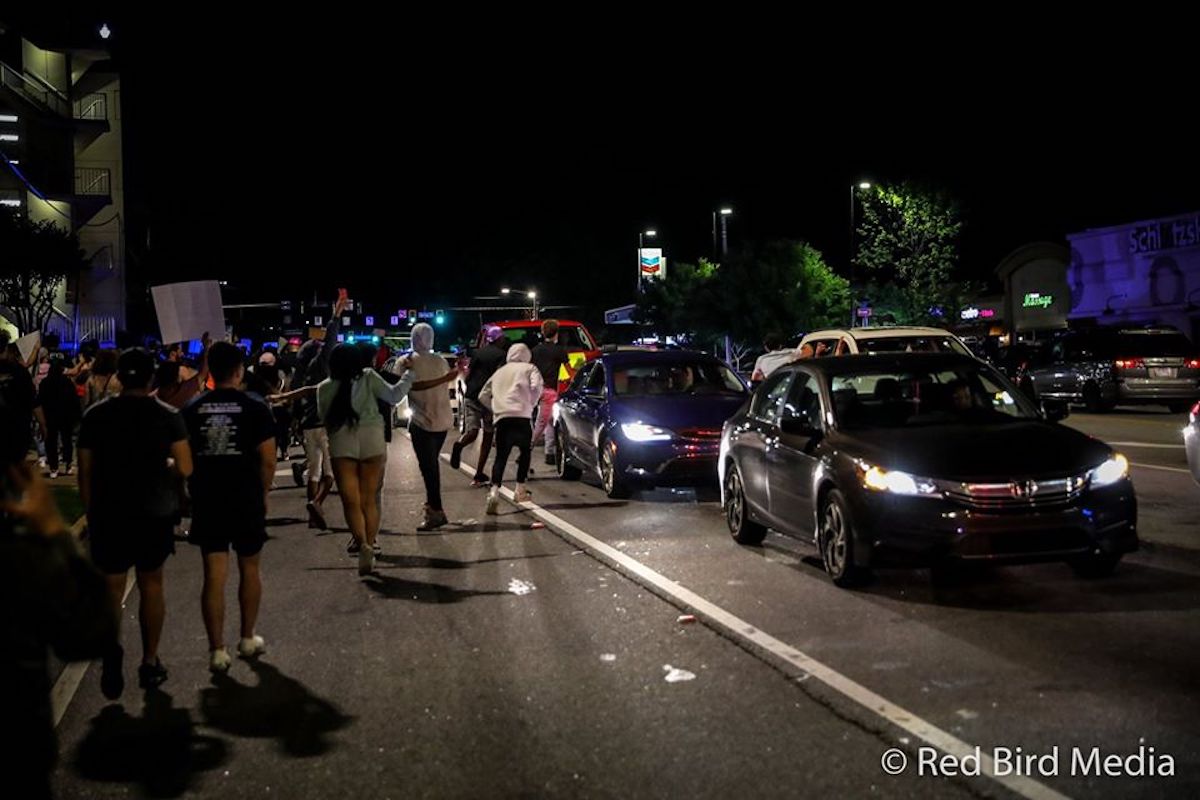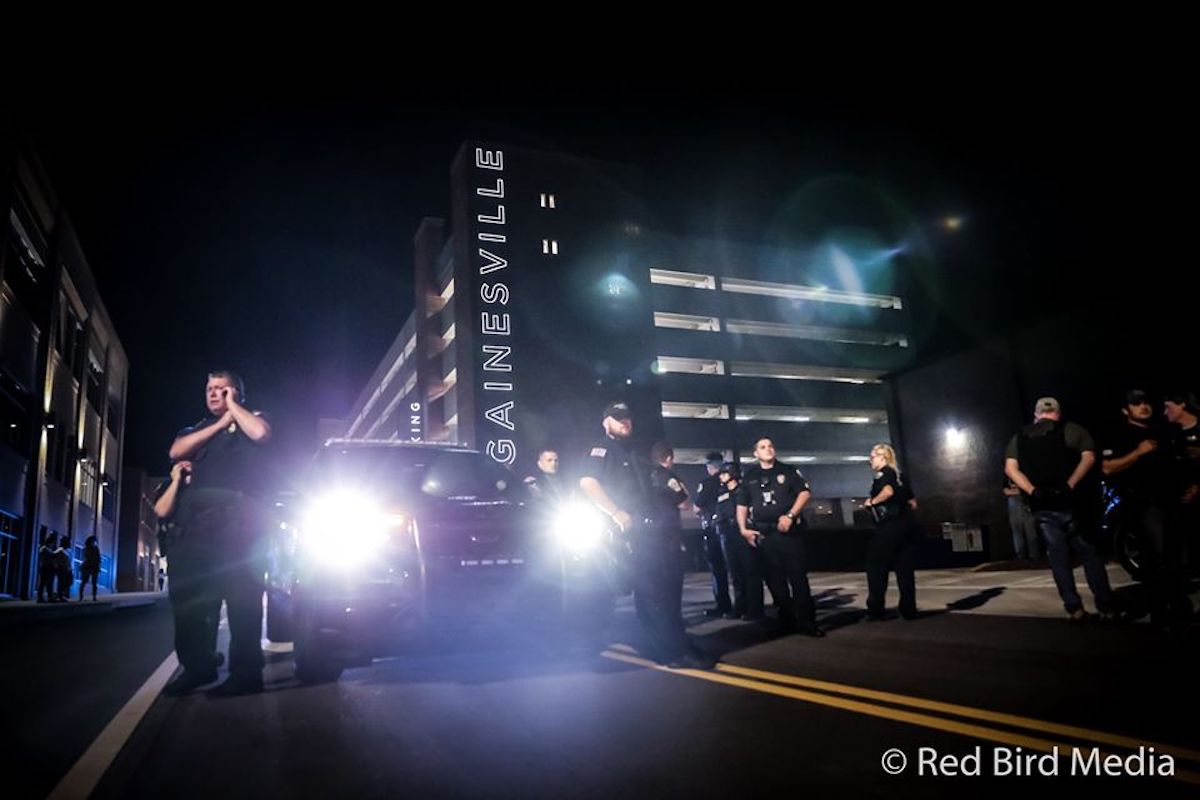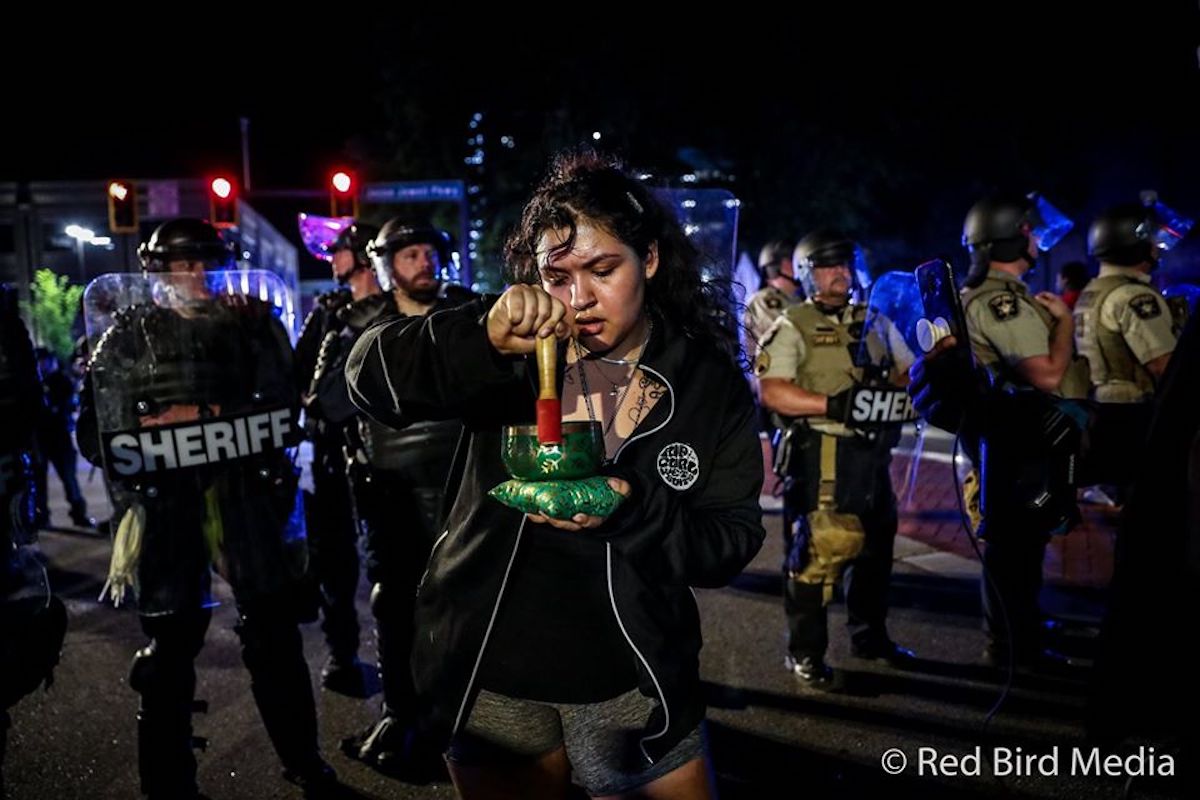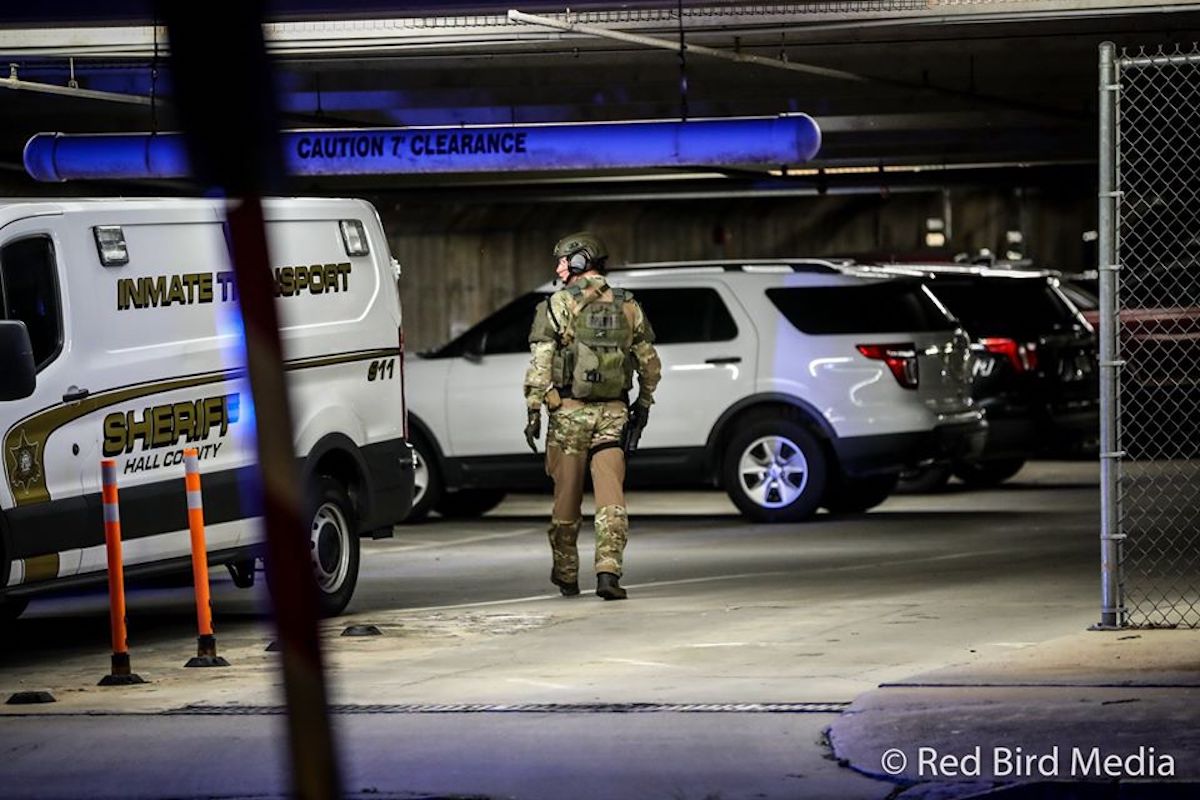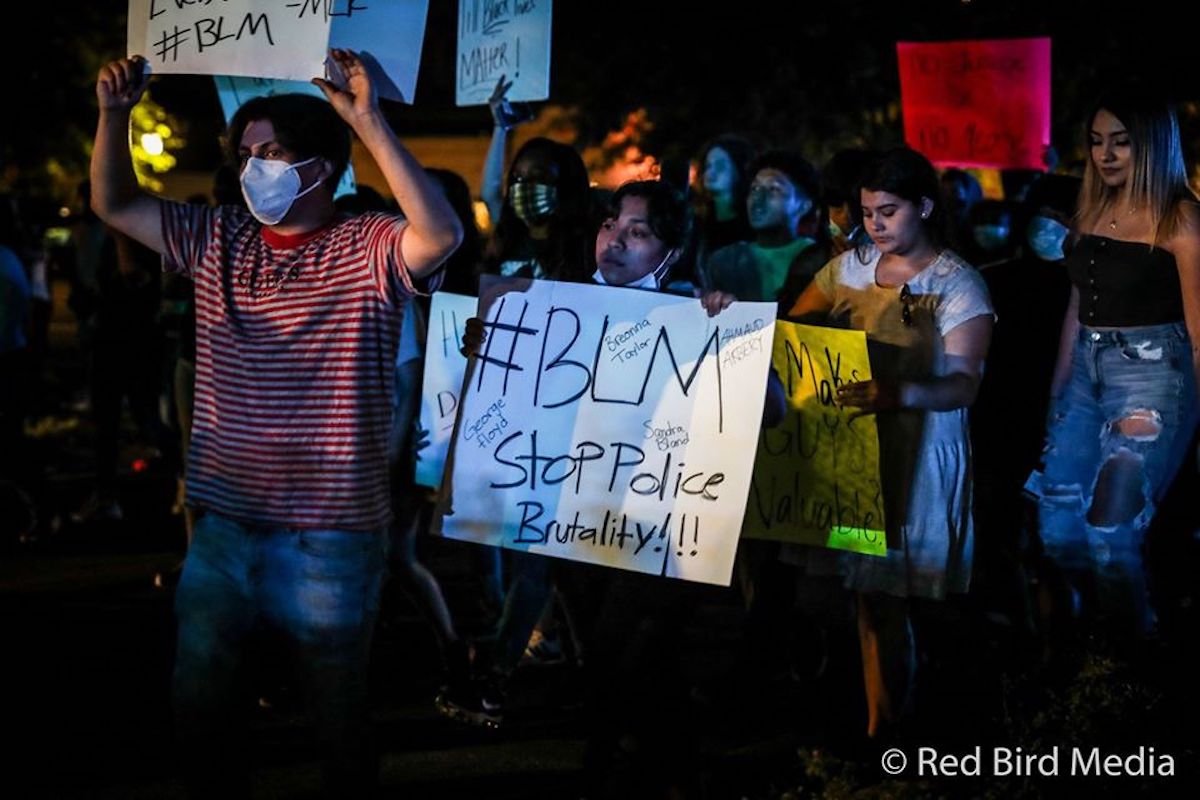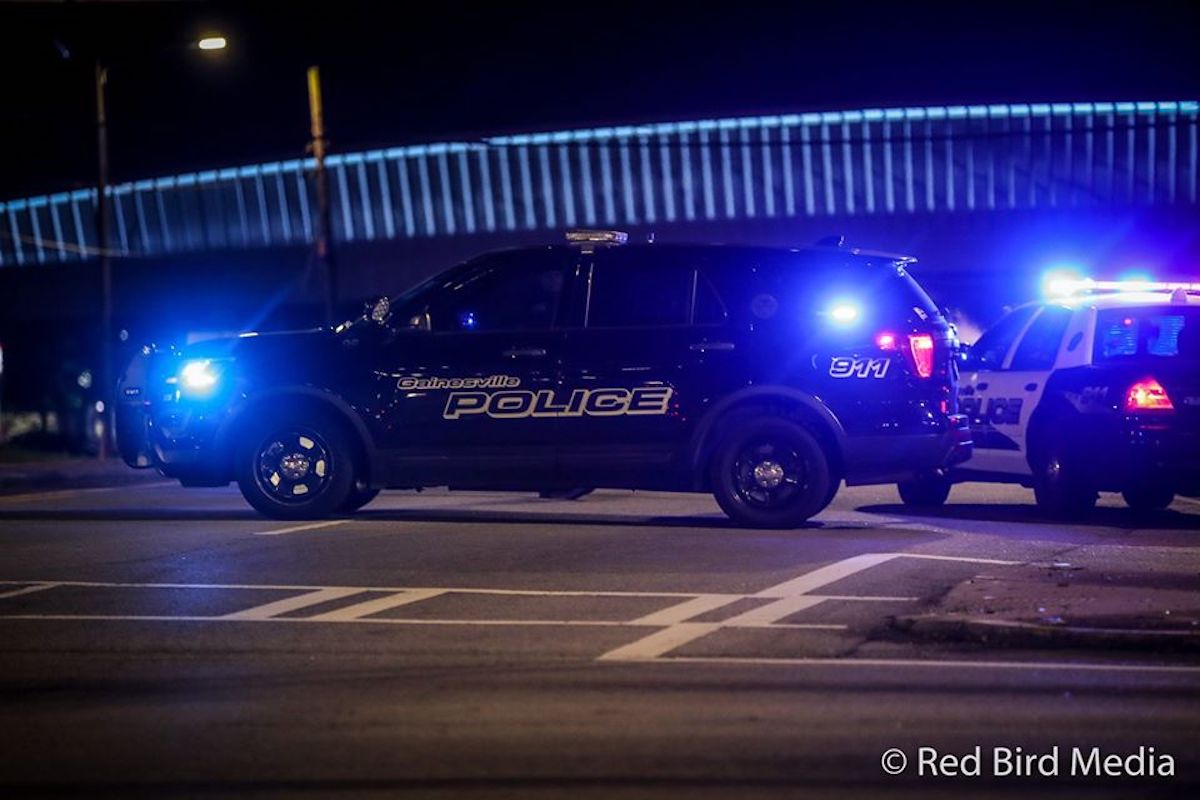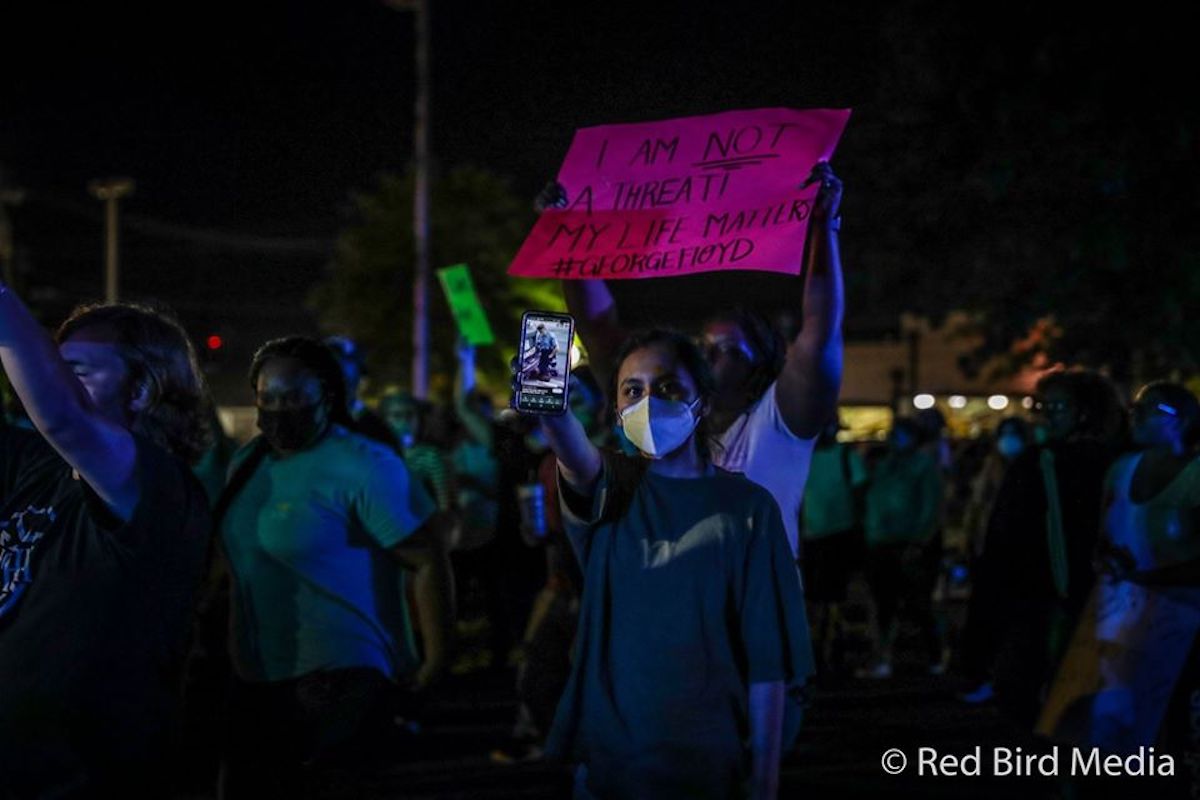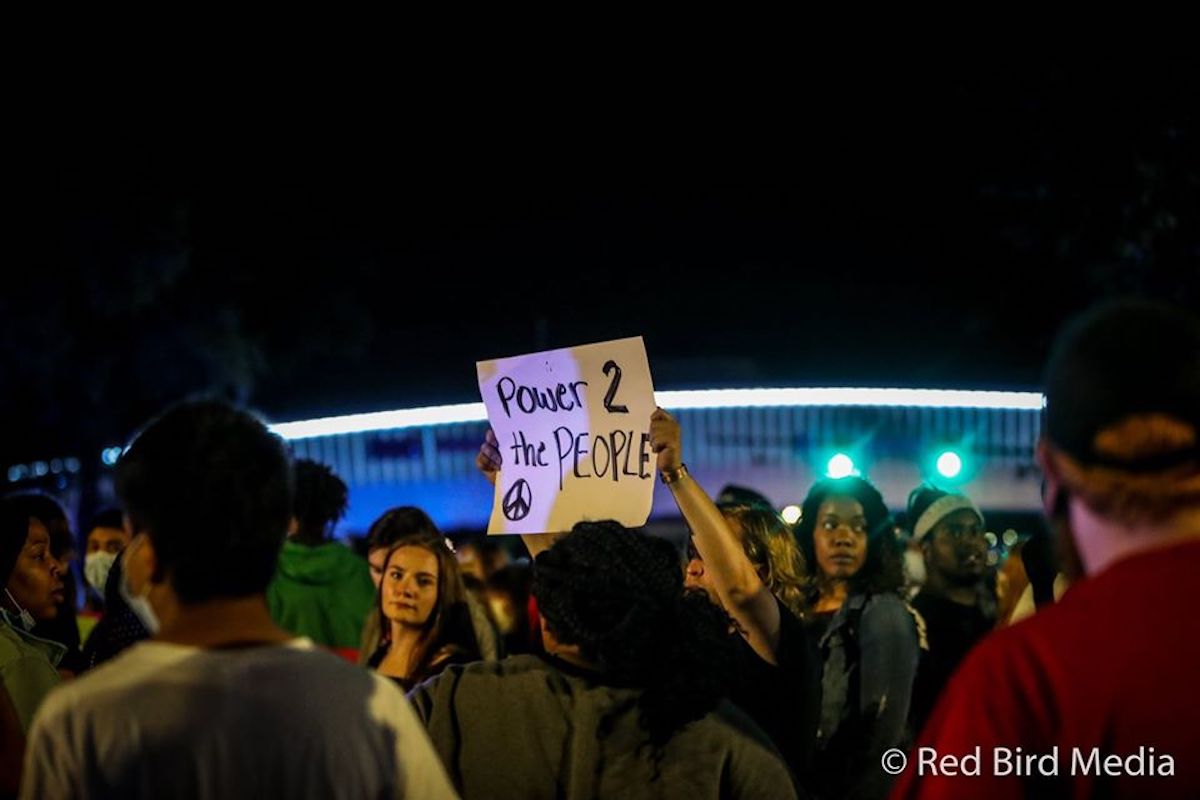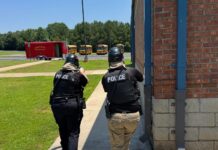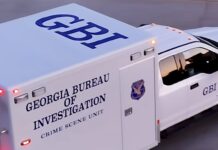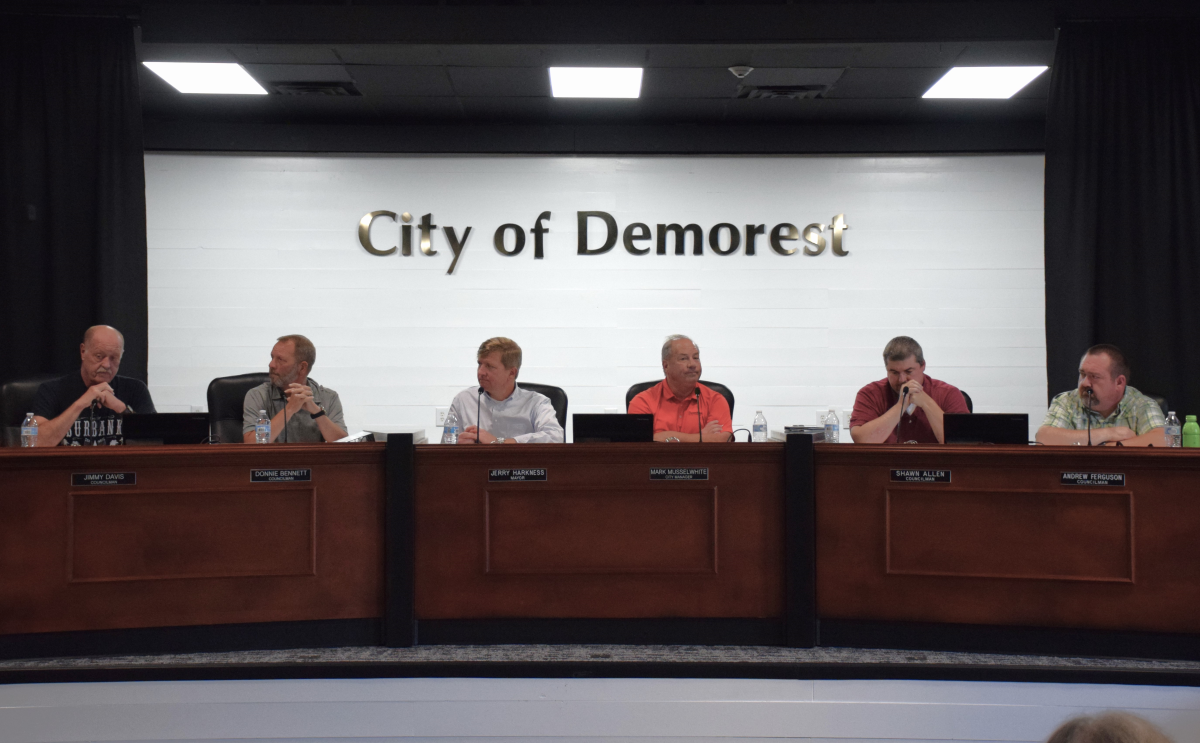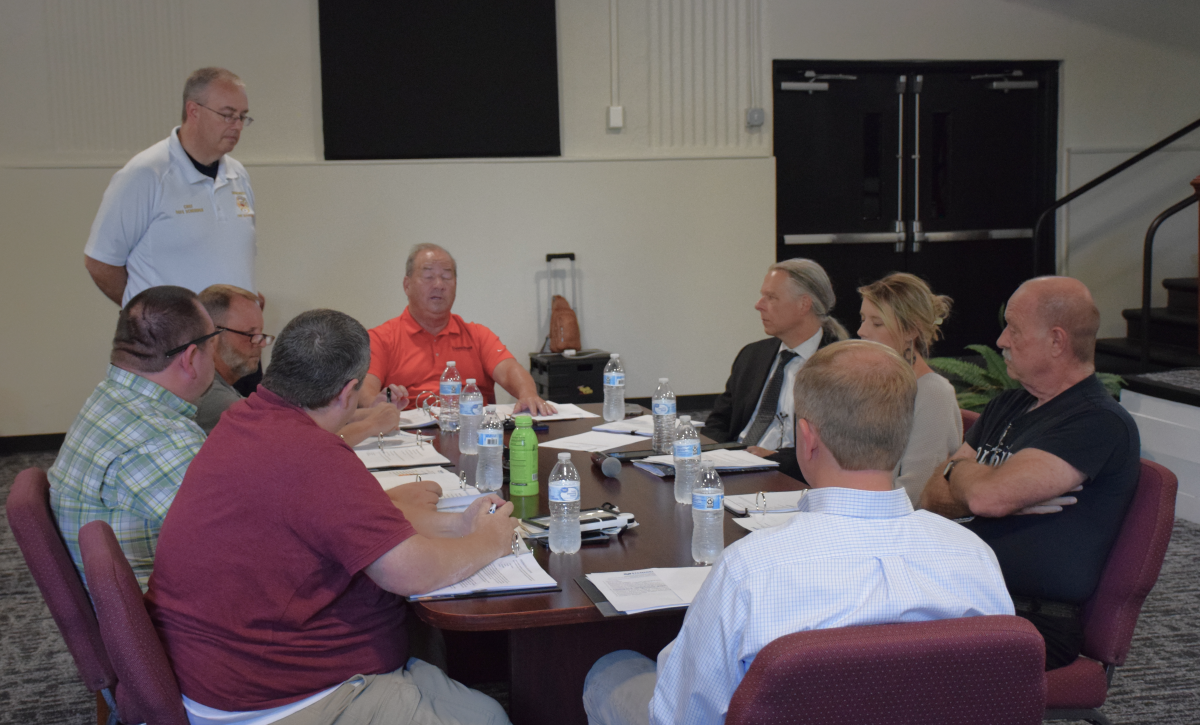Hundreds of people took to the streets of downtown Gainesville late Saturday to express their anger over the death of George Floyd.
Hall County Sheriff Deputies and Gainesville police controlled traffic and the crowds as marchers made their way along Jesse Jewell Parkway. The protest that began quietly earlier in the day stretched on for hours. Tensions escalated as shouting protesters waved signs and banners in front of police. At one point, fireworks were thrown into the line of law-enforcement. No injuries were reported.
Protesters were visibly upset as they protested yet another black man’s death at the hands of police officers. Some carried signs denouncing police brutality. Others proclaimed Black Lives Matter. One protestor carried a sign asking, “Am I next?”
Hall County deputies in riot gear helped Gainesville police hold the line. Police have not yet issued any official reports on whether there was any physical violence or arrests. There are unconfirmed reports that a police vehicle may have been damaged.
Another protest is being organized for Monday, June 1 at 5 p.m. in the vacant lot near the pedestrian bridge in midtown Gainesville. Organizers say the purpose is to confront police brutality.
Expanded state of emergency
Gov. Brian Kemp has expanded the State of Emergency he initially issued for Fulton County to include every county in Georgia. And in the state’s capital, Atlanta Mayor Keisha Lance Bottoms has extended the city’s nighttime curfew from 9 p.m. Sunday through sunrise Monday, June 1.
In addition to extending the state of emergency, Gov. Kemp signed an order late Saturday that allows as many as 3,000 National Guard troops to deploy to reinforce local and state law enforcement.
Officials hope to avoid more chaotic looting and destruction. The CNN Center and College Football Hall of Fame were among the many downtown Atlanta businesses that were damaged during demonstrations on Friday.
A large crowd protested Saturday outside the governor’s mansion.
Days of unrest
The protest follows days of unrest in cities and towns across the nation that erupted after a graphic video surfaced showing a white police officer kneeling on Floyd’s neck as he lay face down in the street. A different video later surfaced showing two more officers kneeling on him during the May 25 incident. Floyd was in handcuffs, arrested in an incident involving a counterfeit bill. He pleaded with the officers to let him stand because he couldn’t breathe.
“Please, please, please, I can’t breathe,” he said. “My stomach hurts. My neck hurts. Please, please. I can’t breathe.”
The video later shows Floyd’s lifeless body being carried onto a stretcher.
A criminal complaint filed by prosecutors four days after Floyd’s death determined Officer Derek Chauvin had his knee on Floyd’s neck for 8 minutes and 46 seconds. Two minutes and 53 seconds of that time was after Floyd became unresponsive.
Chauvin, 44, and three other officers involved in the incident were fired. Chauvin was arrested and charged Friday with third-degree murder and manslaughter.
While the Georgia protests and riots fall on the heels of Floyd’s death, tensions have been simmering since Ahmaud Arbery was shot to death in South Georgia.
Arbery, 25, was in the Satilla Shores neighborhood in Brunswick on February 23 when father and son, Gregory and Travis McMichael, confronted him with two firearms. During the encounter, Travis McMichael shot and killed Arbery. His death took on racial and police brutality overtones. Arbery was black, the McMichael’s are white. The elder McMichael is a retired police officer and investigator.
It would be more than two months before any arrests were made in that case.
Gregory McMichael, 64, and Travis McMichael, 34, were charged with the felony murder of Arbery on May 7, and William Bryan, 50, was charged May 21.
SEE ALSO


